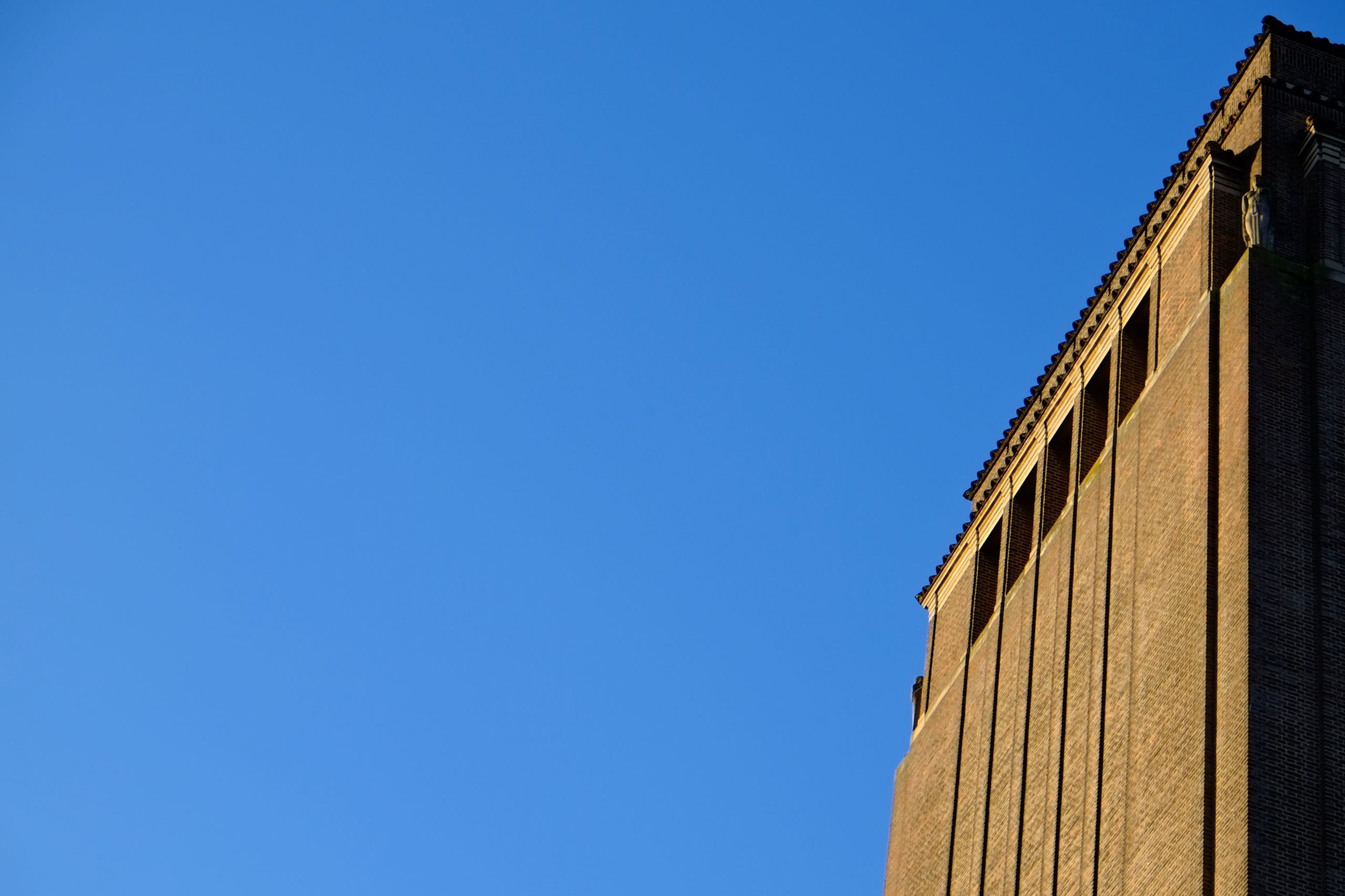Tall
Tales:
Secrets
of the
Tower
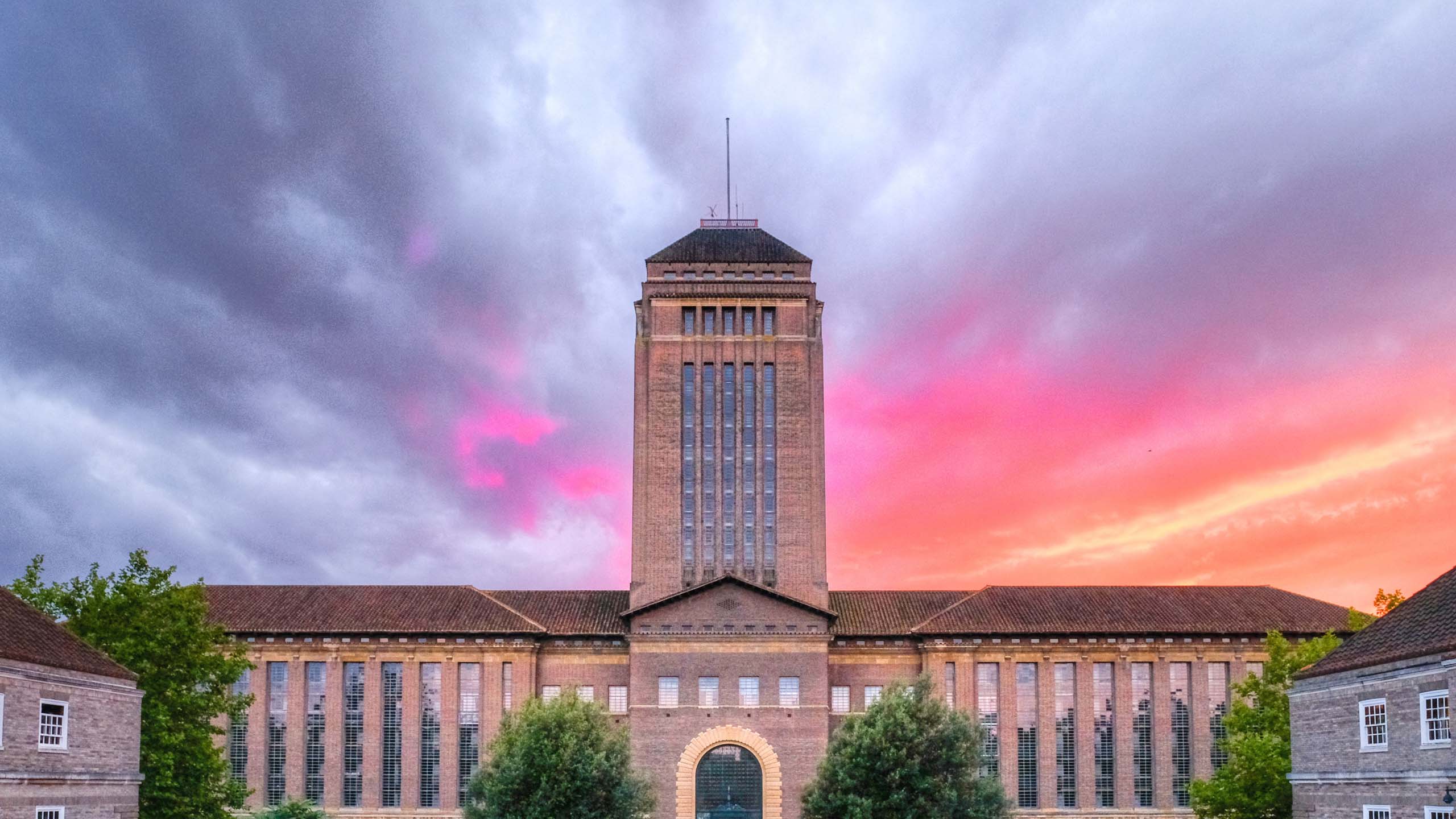
It is an icon of the Cambridge skyline that has inspired authors from CS Lewis to Stephen Fry – and been an enduring source of undergraduate legend for its mythical collection of Victorian pornography.
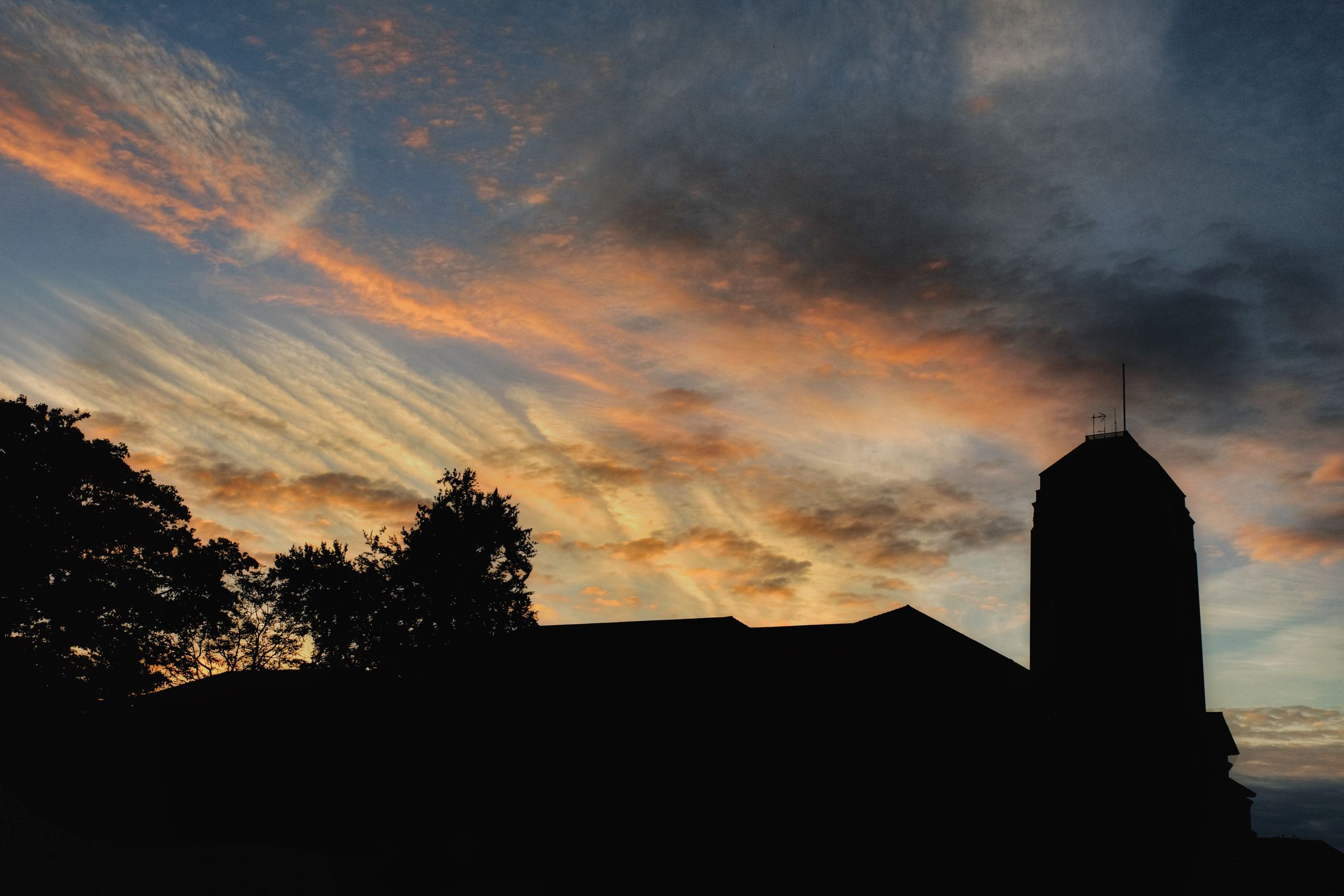
Now, the treasures of Cambridge University Library’s fabled 17-storey Tower Collection, chosen from nearly a million volumes, will go on public display together for the first time in a free exhibition.
Tall Tales: Secrets of the Tower opens to the public from May 2-October 28. More than 90 per cent of the objects have never before been on public display.
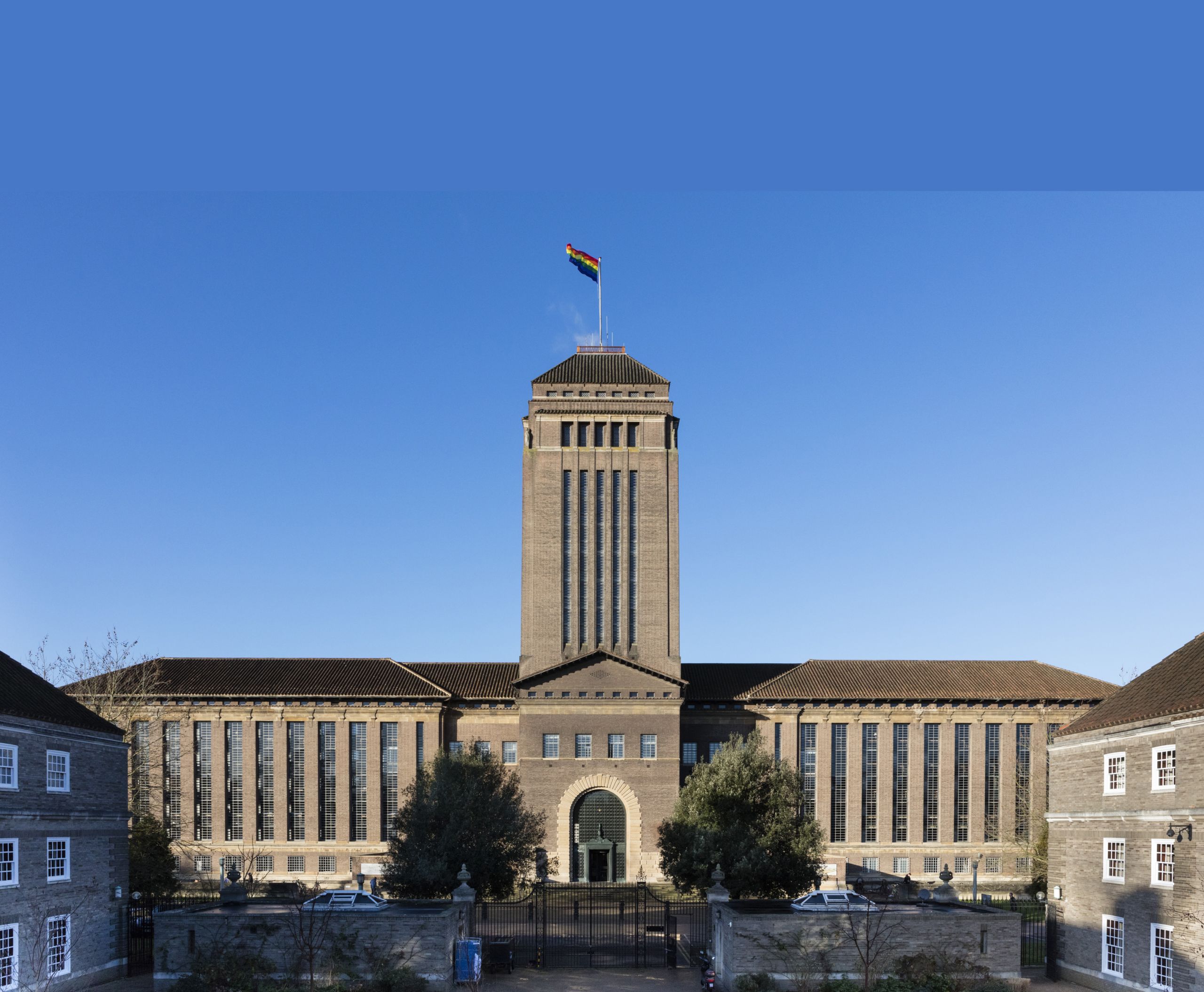
The Tower Collection is an Aladdin’s cave for book lovers and historians alike where valuable first editions jostle for shelf space alongside Victorian toys and games, colourful children’s books, Edwardian fiction (beautifully preserved in their original dust jackets) and popular magazines of the day.
The oldest items in the Tower date from 1710, with the most recent material dating from the early years of the 21st century.
However, until now, access to the 157ft Tower and its collections has usually been limited to a handful of library staff, researchers and academics, with the majority of its hundreds of thousands books remaining unopened.
As well as visiting the exhibition, for a limited time only, members of the public will be able to sign up for a guided tour of the Tower.
Described by former Prime Minister Neville Chamberlain as ‘a magnificent erection’, the Tower was designed by Sir Giles Gilbert Scott (architect of the iconic red telephone box and Battersea Power Station) and became the home of so-called ‘secondary material’ received under the Copyright Act which entitles Cambridge University Library to a copy of every book published in the UK.
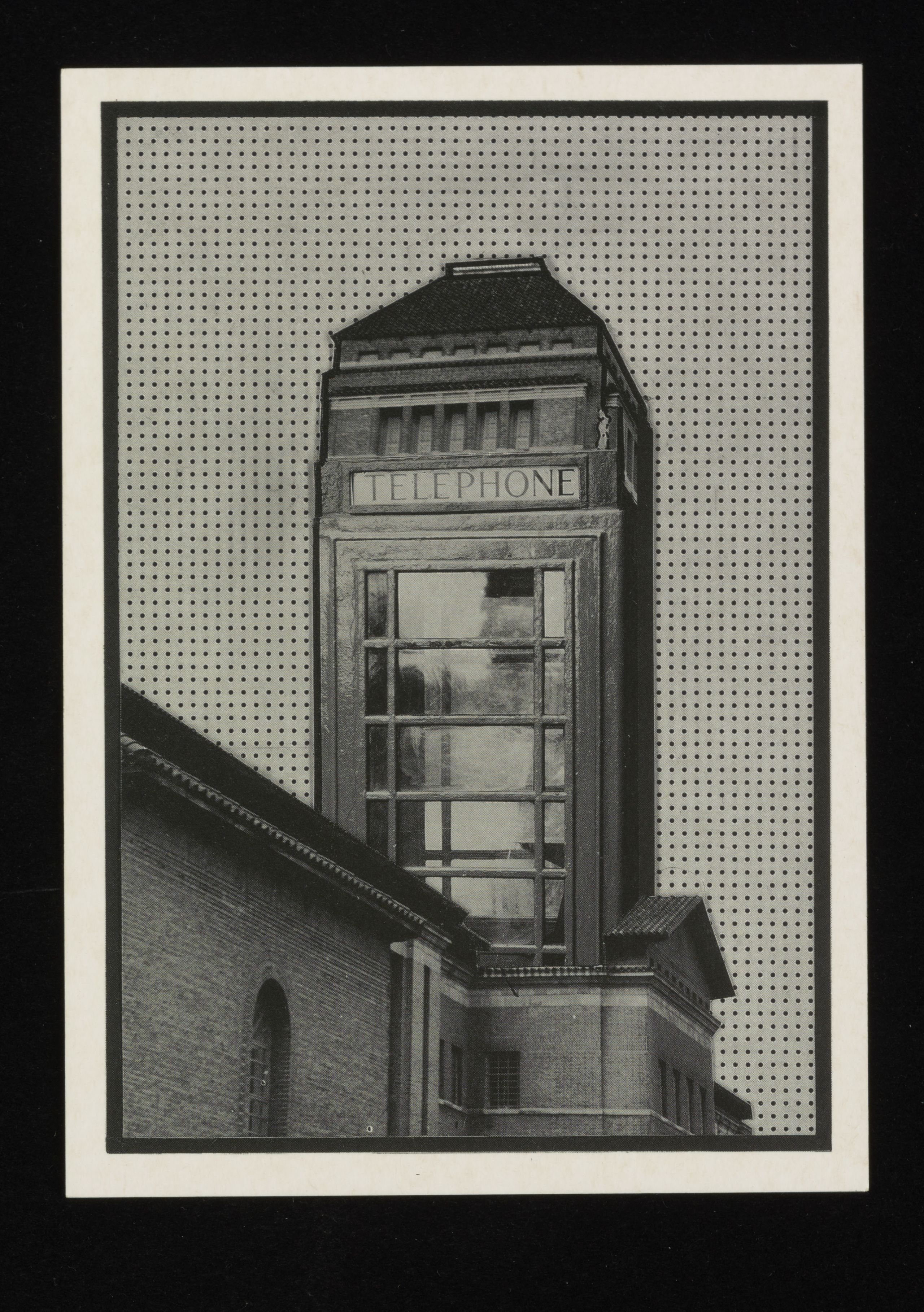
This postcard replaces the Library’s Tower with the telephone box structure (also designed by Giles Gilbert Scott), whose latticed windows are not dissimilar to those used in the Library itself.
This postcard replaces the Library’s Tower with the telephone box structure (also designed by Giles Gilbert Scott).
While first editions of books such as The Hobbit, Casino Royale and The Famous Five series are considered literary classics today, such novels were deemed of little academic value at the time of publication and effectively banished to the Tower.
There, they sit alongside the myriad toys, board games, Valentine’s cards, pop-up books and Mr Men cartoons, which have all found their way into the Tower since its completion in 1934.
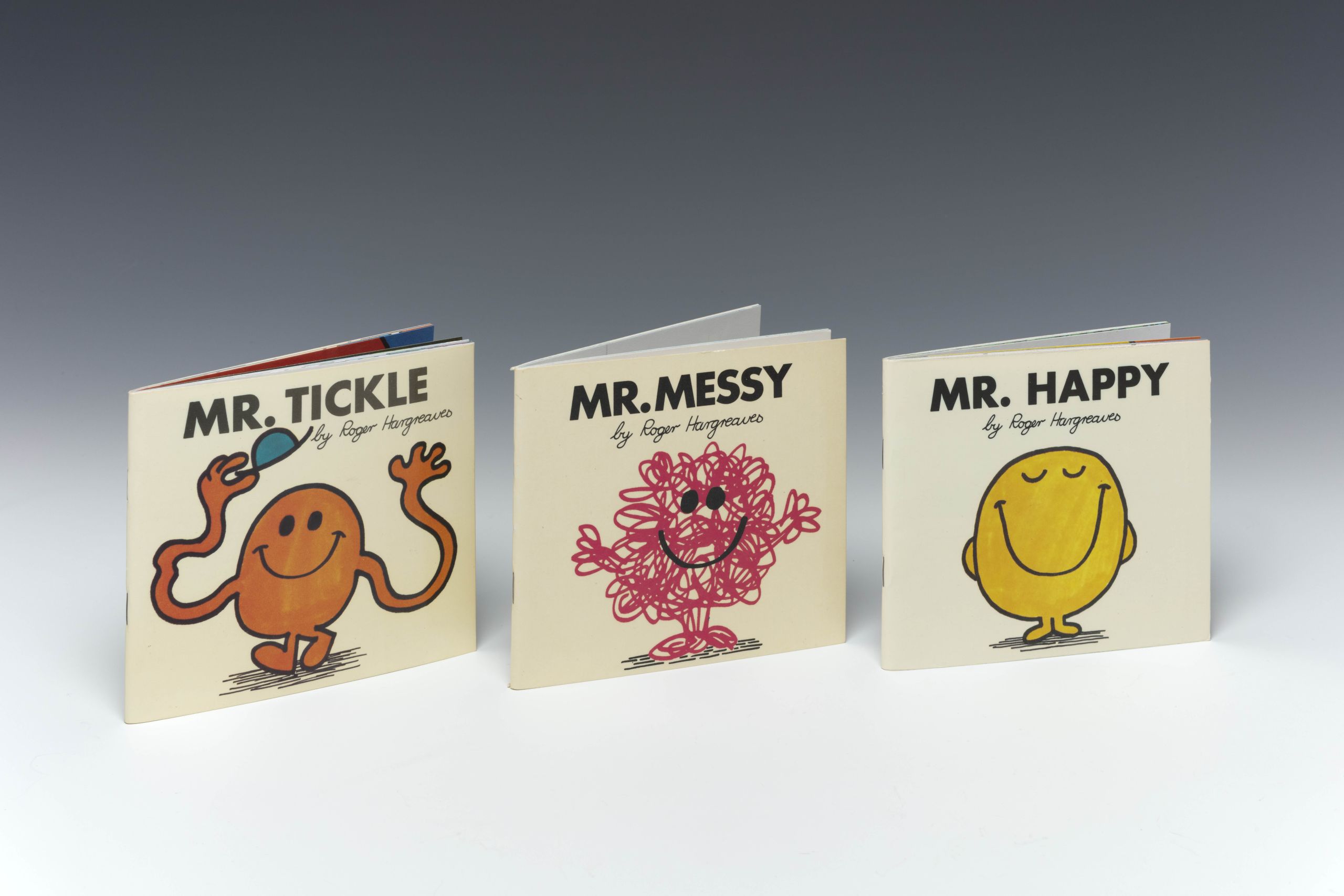
The first Mr Men book, Mr. Tickle, was inspired by Roger Hargreaves’s son, who had asked him what a tickle looked like. More than 100 million Mr Men books have now been sold worldwide.
The first Mr Men book, Mr. Tickle, was inspired by Roger Hargreaves’s son, who had asked him what a tickle looked like. More than 100 million Mr Men books have now been sold worldwide.
The women’s suffrage posters, recently featured by the BBC and New York Times, were also housed among the Tower’s eclectic and ephemeral collections.
“Now regarded as an archive of global importance, the Tower’s irreplaceable contents tell the story of our national life through the printed word. For the first time, we are giving people the chance to explore both the remarkable collections and to glimpse inside this most visible yet mysterious of the city’s landmarks.”
Among the various exhibition themes are those looking at ‘scandalous and libellous books’, ‘curious collections’ and ‘wrapping words’ (looking at the artistry of the dust jacket).
Other highlights of the exhibition include the first novel to focus on poor, working-class black culture in Britain (Samuel Selvon’s The Lonely Londoners), and an array of delightfully-titled books such as Indoor Games for Awkward Moments and Cupid’s Code (For the Transmission of Secret Messages by Means of the Language of Postage Stamps).
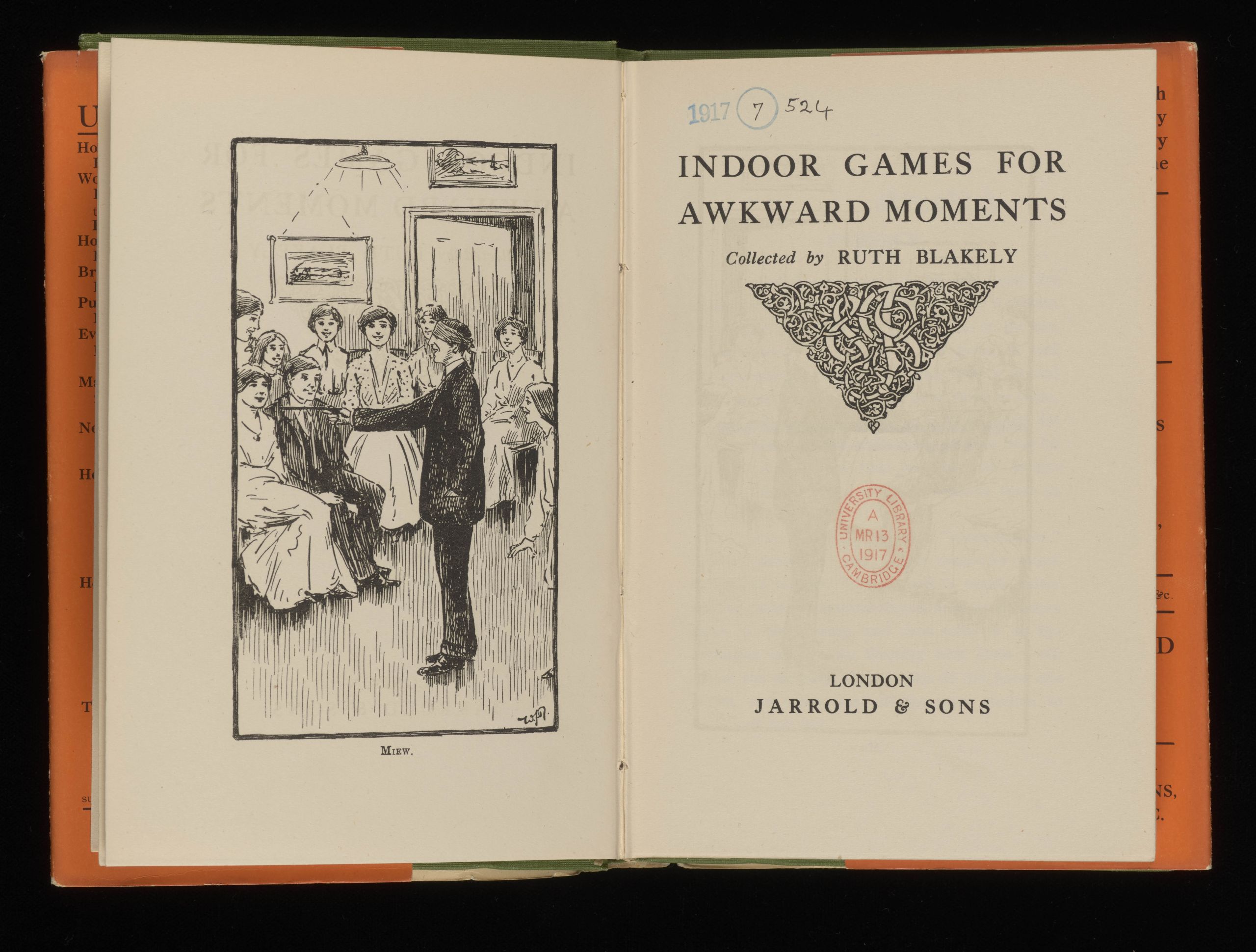
‘The object of this volume is to try and lessen the number of dreadful pauses which so many hostesses have experienced with their guests’.
‘The object of this volume is to try and lessen the number of dreadful pauses which so many hostesses have experienced with their guests’.
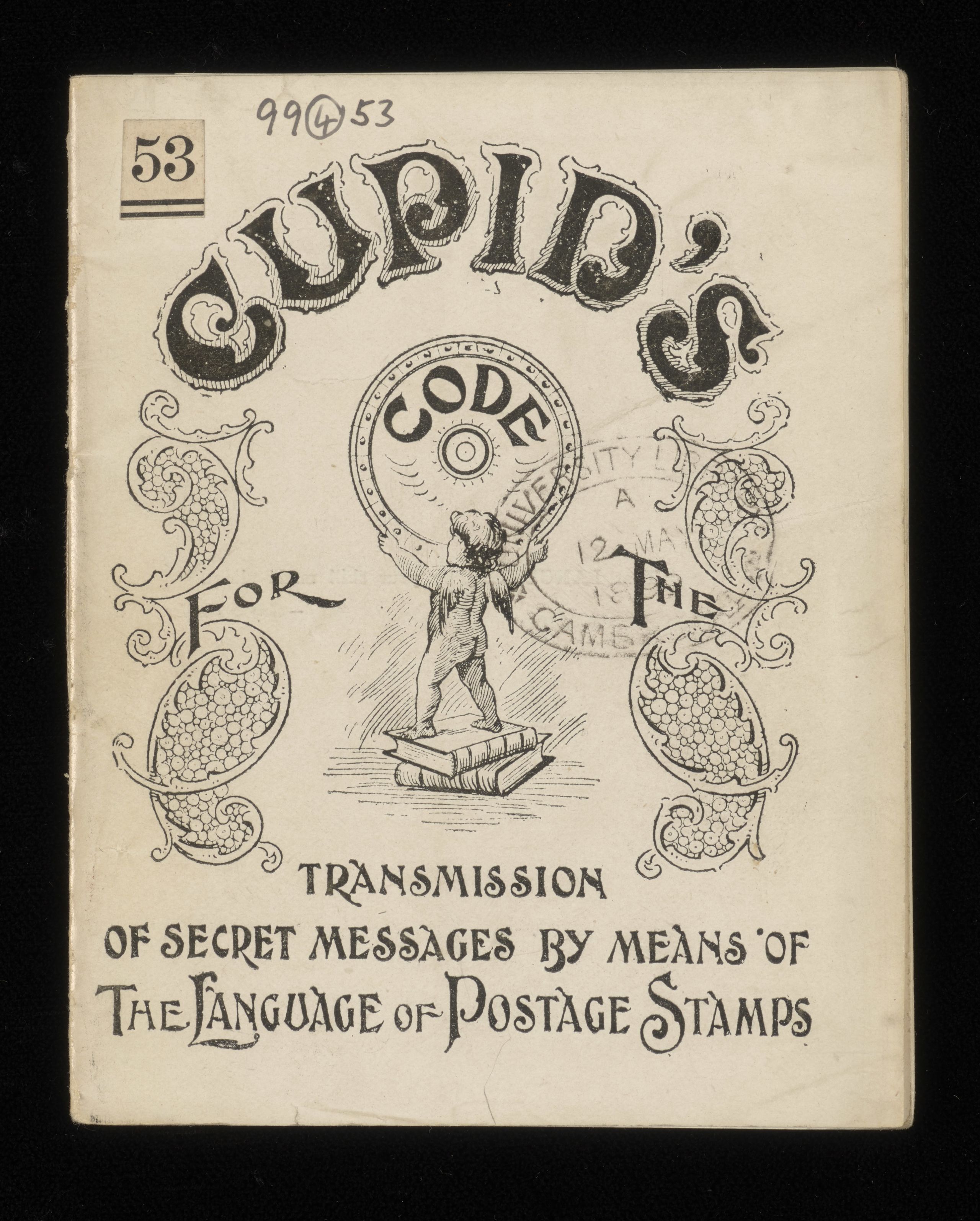
Essential for every late-Victorian courting couple, this small booklet allows for secret romantic messages to be transmitted based on the position of stamps on envelopes.
Essential for every late-Victorian courting couple, this small booklet allows for secret romantic messages to be transmitted based on the position of stamps on envelopes.
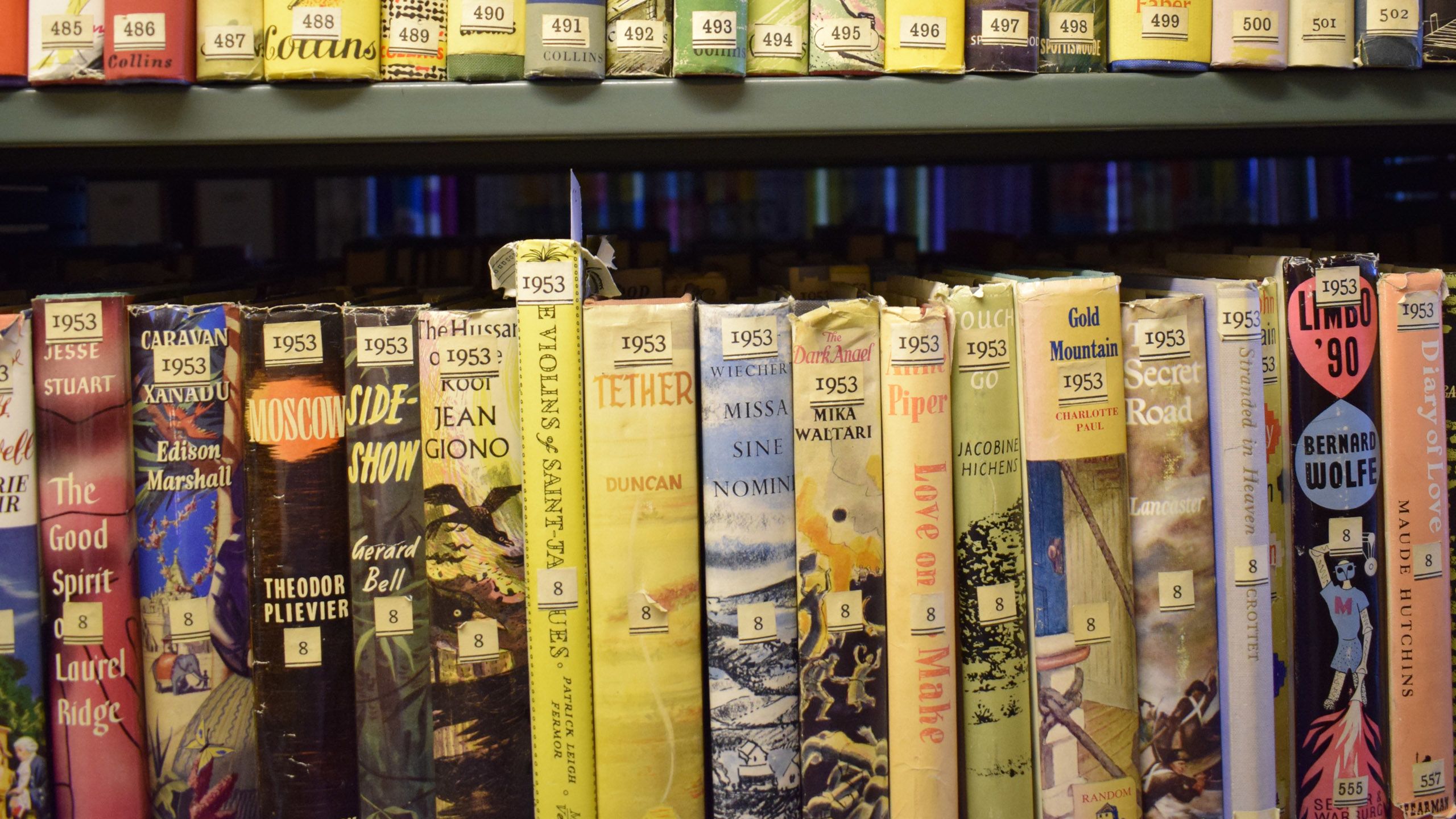
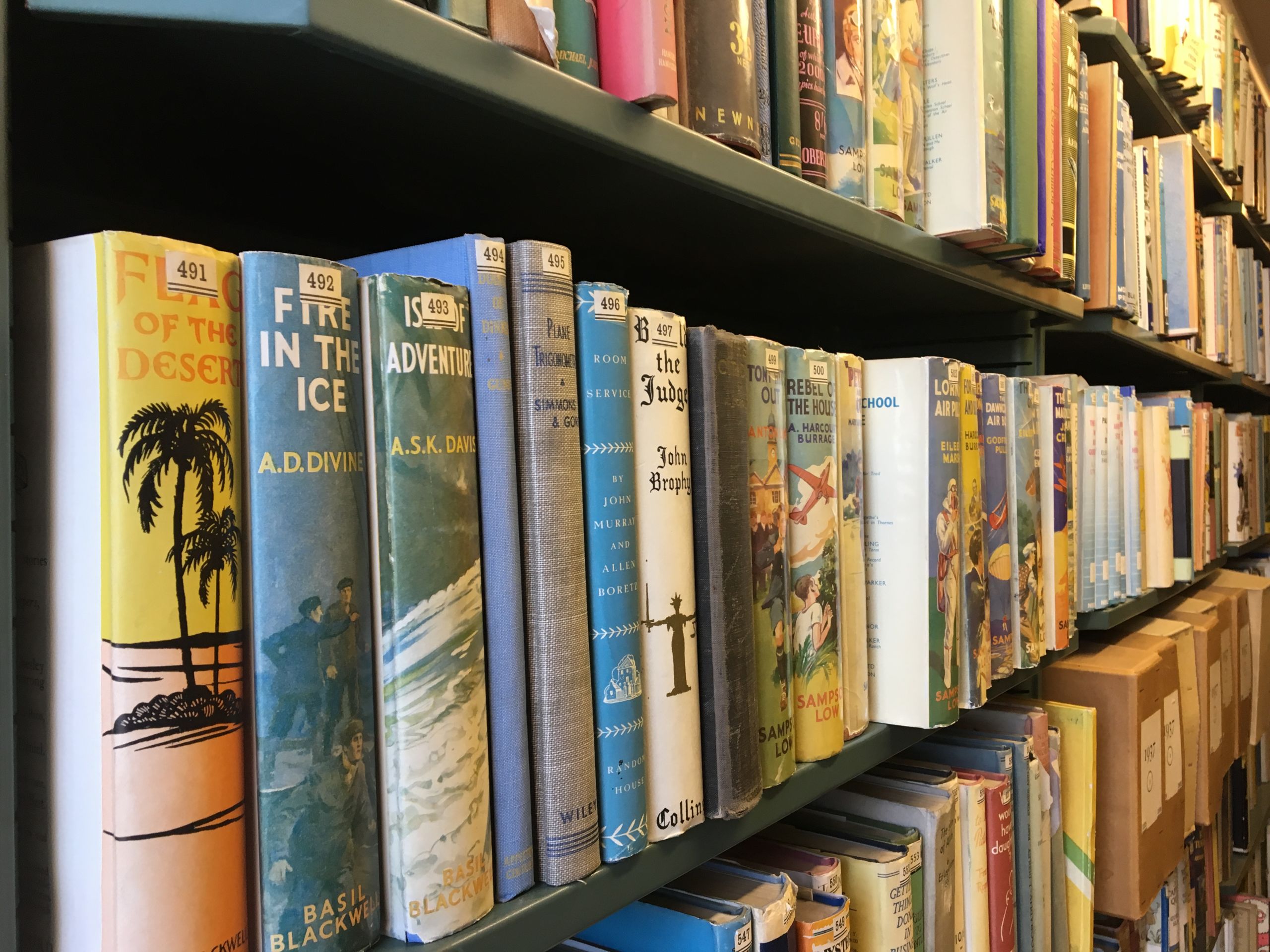
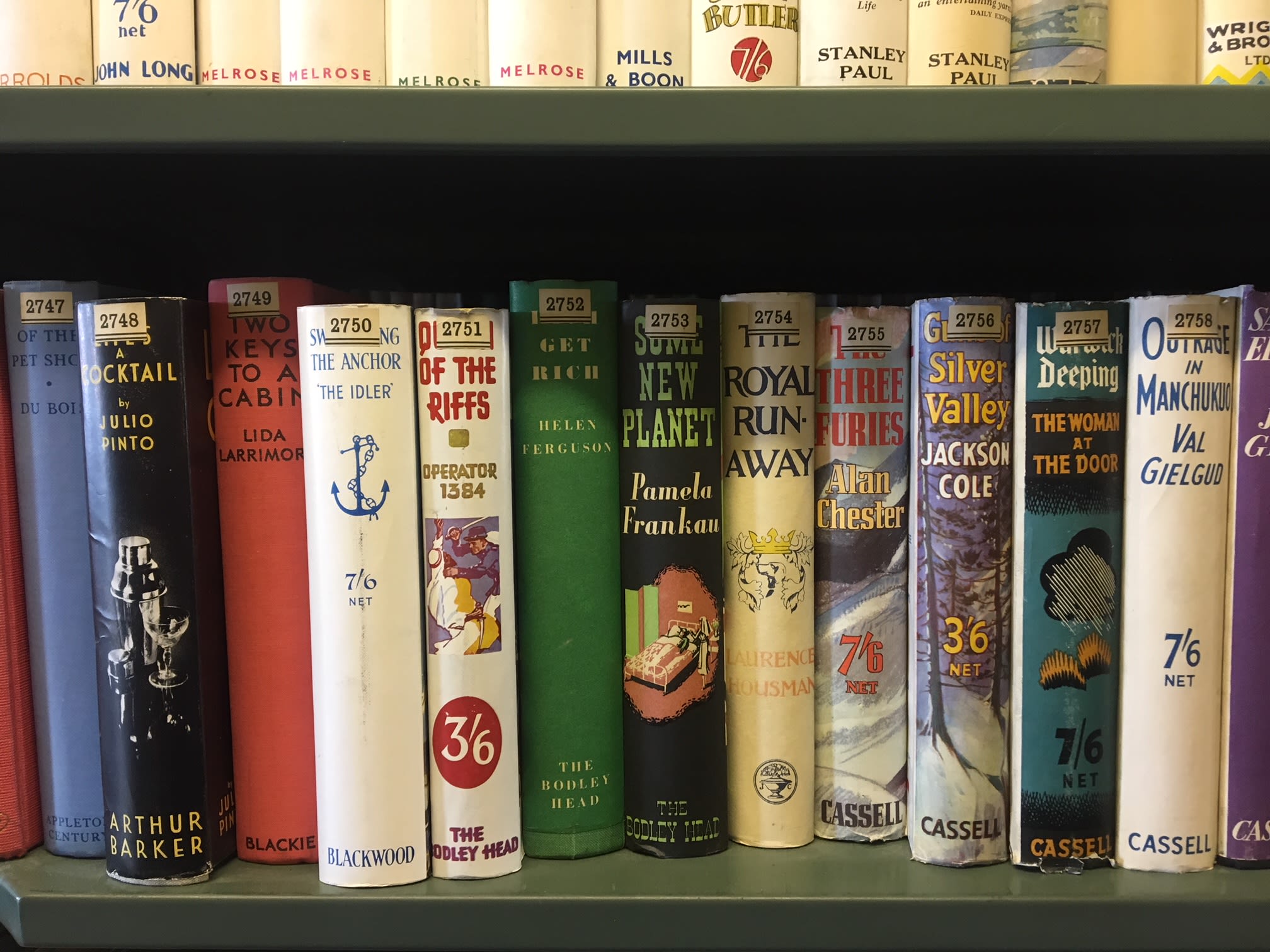
Beginnings
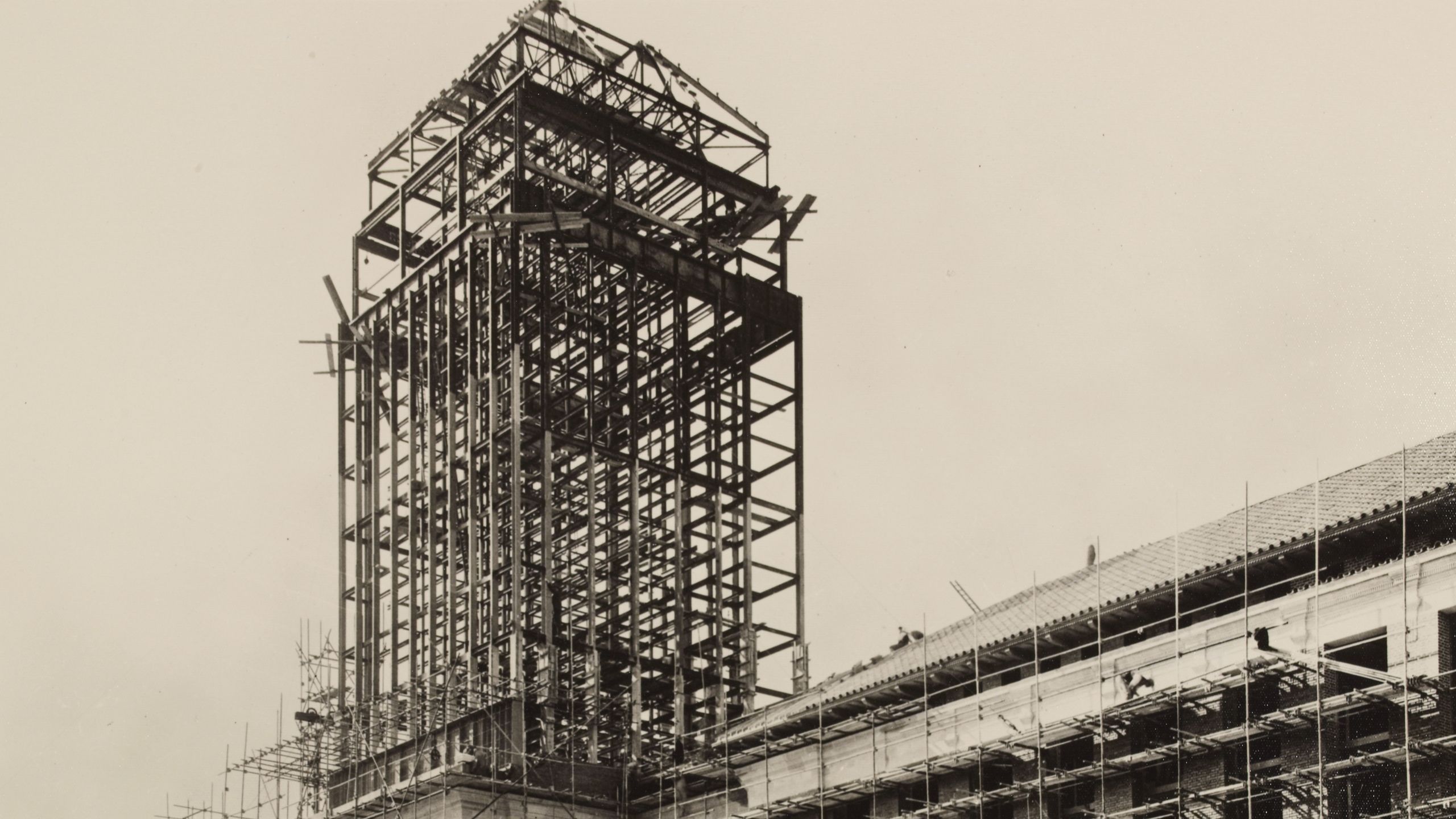
Since the Biblical myth of the Tower of Babel — possibly influenced by the design of Mesopotamian ziggurats — towers have been associated with knowledge and learning, and have featured prominently in library architecture.
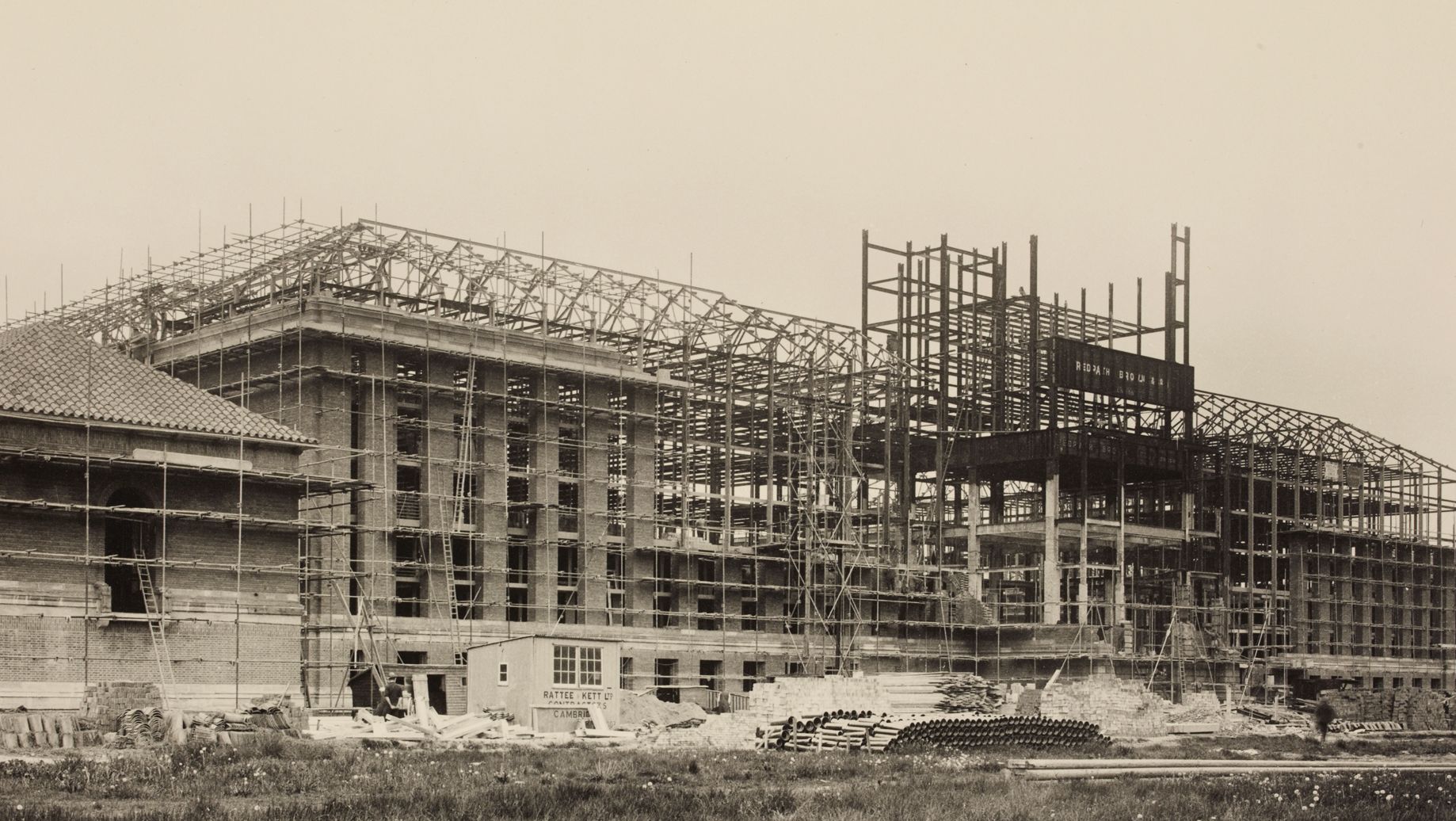
The lower floors of the Tower under construction.
Sir Giles Gilbert Scott toured twenty American libraries in the early stages of his work on the new University Library and was likely influenced by what he saw.
A juxtaposition between public and private spaces is noticeable with different kinds of tower. Large structures like the University Library (which influenced C. S. Lewis’s The Dark Tower) and Senate House Library in London (the inspiration for Orwell’s Ministry of Truth) dominate both the landscape and the people nearby, and are often seen as imposing and oppressive.
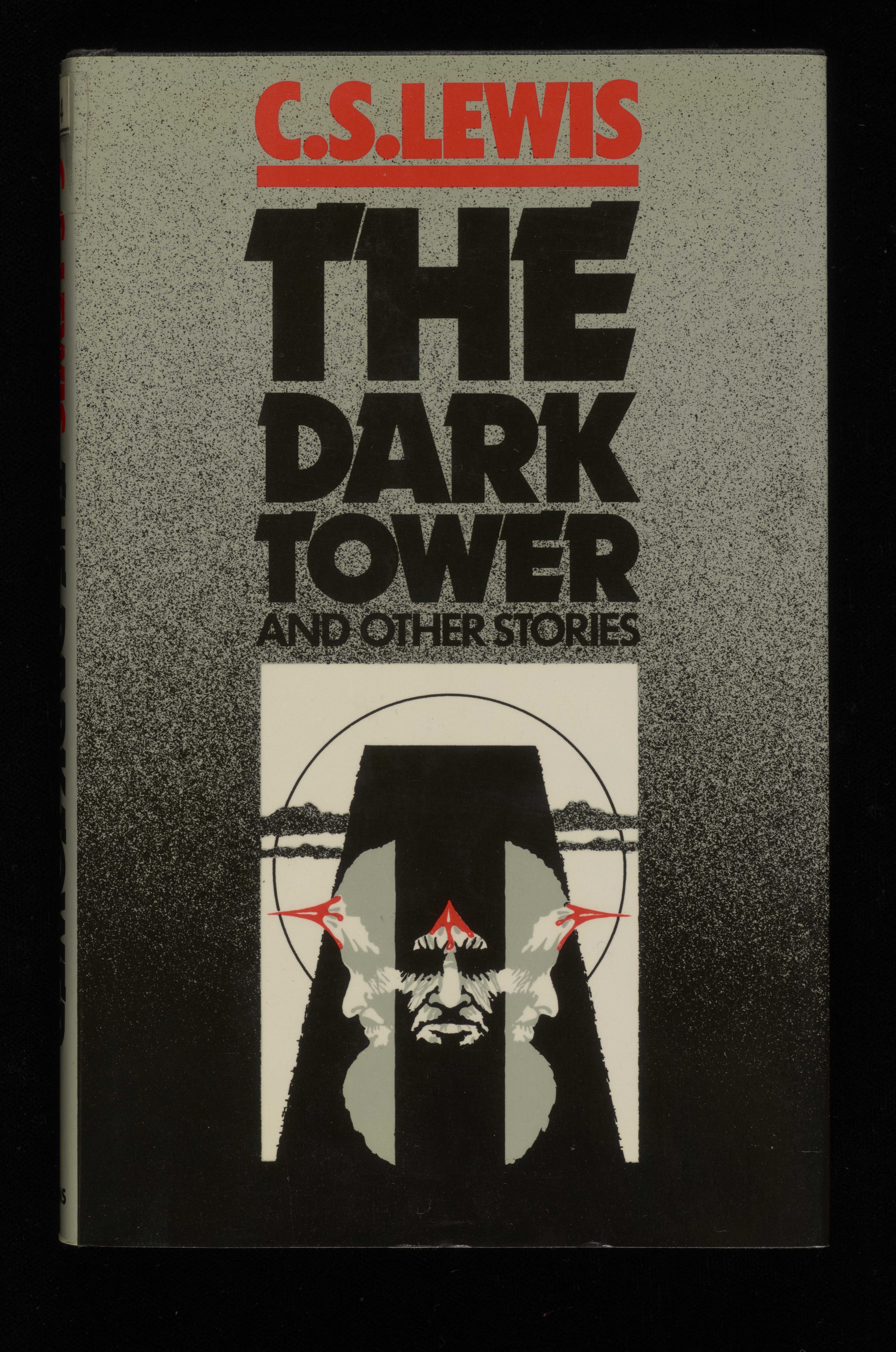
Alternatively, the isolated turret Michel de Montaigne found for his books served as a comforting, secluded place where he could escape from the world and write his masterpiece, the Essais.
At 157 feet tall Cambridge University Library’s tower is its most recognisable feature. Its contents (ten of its 17 floors are filled with books) are a mystery to many, giving rise to much speculation.
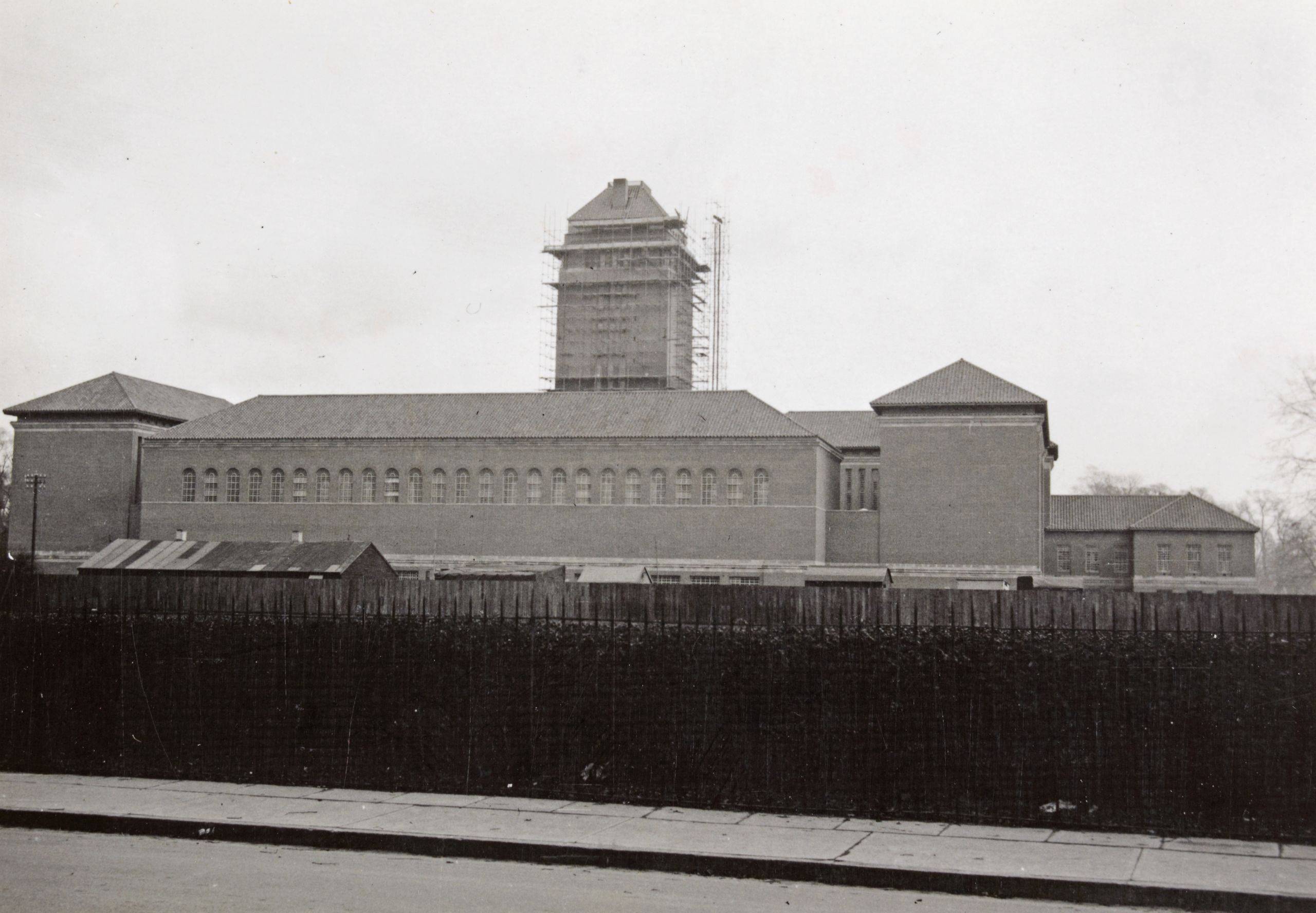
The final stages of the Tower construction.
The building itself inspires love, hate, and rumour in equal measure.
Received under the Copyright Act and once perceived as a‘secondary' collection to the main academic holdings, the tower’s contents are now recognised as a treasure trove for researchers.
Its collection tells the story of Britain's love affair with books. In Tall Tales, the Library lifts the lid on the Tower, the rumours surrounding it, and centuries of popular publishing in the UK.
Since 1710, the Library has been one of a handful in the UK entitled to claim a free copy of all books and periodicals published on these islands.
Originally, copyright accessions were stored in a ‘turret’ in the old University Library — the predecessor of today’s tower. The old Library eventually filled with copyright books, and early in 1922 the decision was taken to build a new library.
Giles Gilbert Scott’s imposing structure was opened in 1934, the tower providing both an impressive architectural feature and much-needed space for secondary collections.
The Copyright Act ended the Stationers’ Company monopoly on licensing and censorship (literally the right to print books). Copyright now lay with the author for fourteen years after publication, though they could sell it on to a printer if they chose.
One of the ways in which these rights could be recognised was by presenting copies of a book to a number of libraries (the Royal Library and university libraries like Oxford and Cambridge).
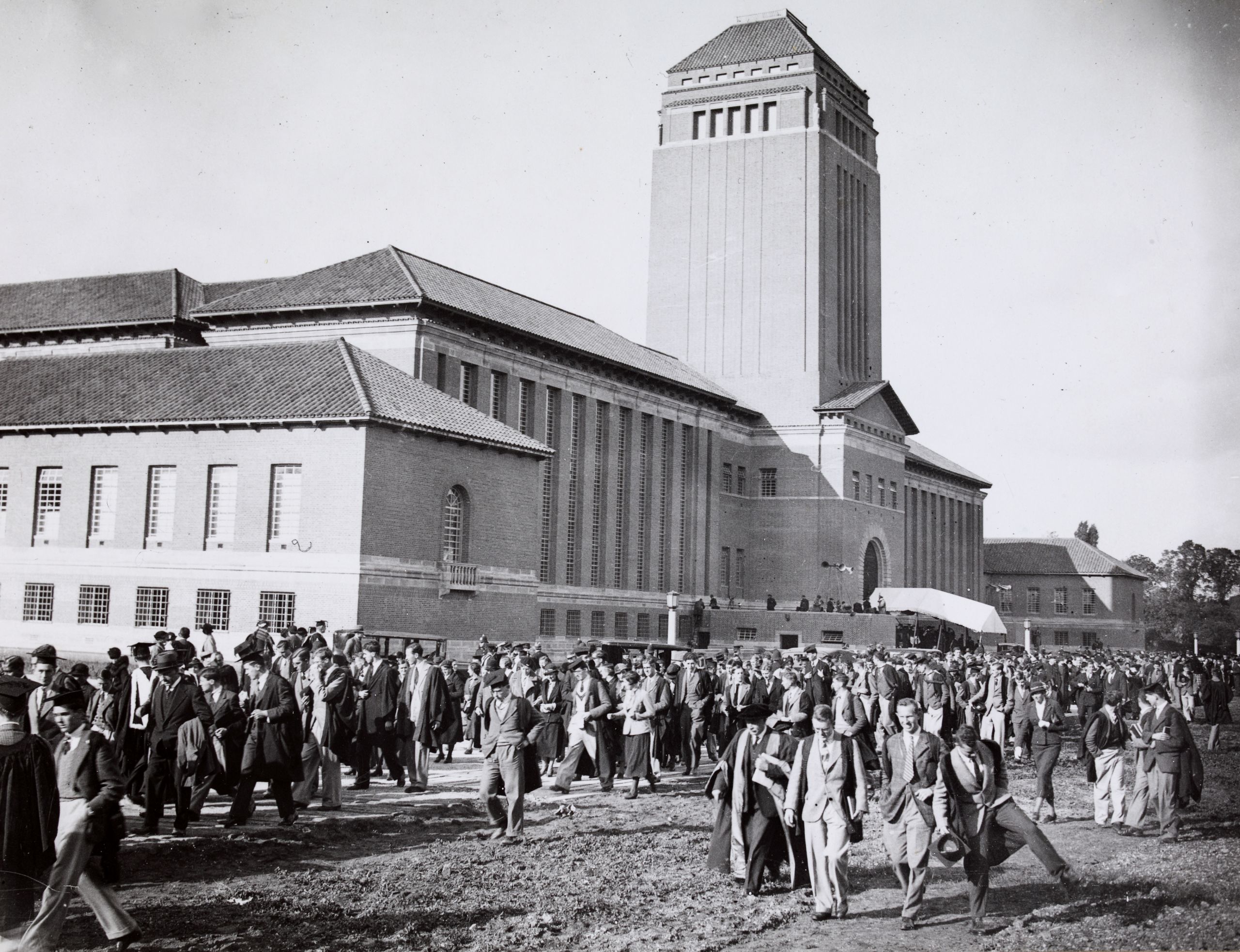
Crowds at the opening of the Library in 1934.
Over nine months in 1710, just over 700 titles came into the Library through the Copyright Act. Many of these were ephemeral items including a volume of nearly thirty pamphlets, some of which are now exceedingly rare, including an eight-page chapbook on the qualities of the four daughters of the Duchess of Marlborough.
Copyright deposit was far from organised; not everything which ought to have been sent was, and there was no collaboration between libraries as to what ought to be kept and what discarded.
Although the tower is generally devoid of decoration, the four corners near the top now bear figures of the Four Winds of Heaven by the sculptor Edward Carter Preston. Preston also worked on Liverpool Cathedral with Sir Giles Gilbert Scott.
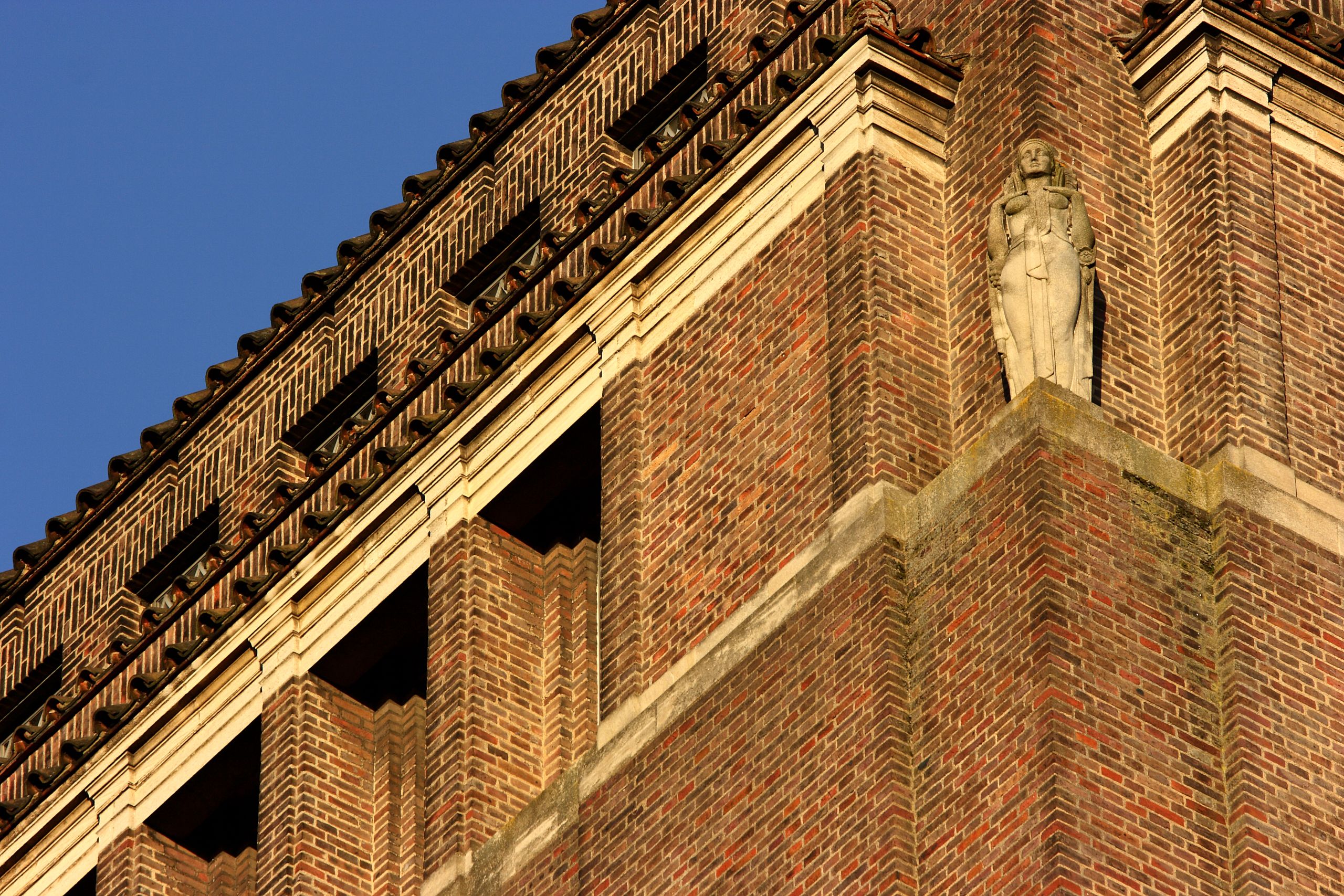
In addition to designing large public buildings Sir Giles Gilbert Scott was also responsible for the K2 red telephone box, which began to appear on London streets in 1926, following a less than enthusiastic take-up of the K1 design of 1920.
Today, many non-academic copyright accessions are preserved off-site in a new store in Ely, and a high proportion of material (both monographs and journals) is received in electronic format rather than hard copy, freeing up space and improving accessibility.

The lower floors of the Tower under construction.
The lower floors of the Tower under construction.

The final stages of the Tower construction.
The final stages of the Tower construction.

Crowds at the opening of the Library in 1934.
Crowds at the opening of the Library in 1934.
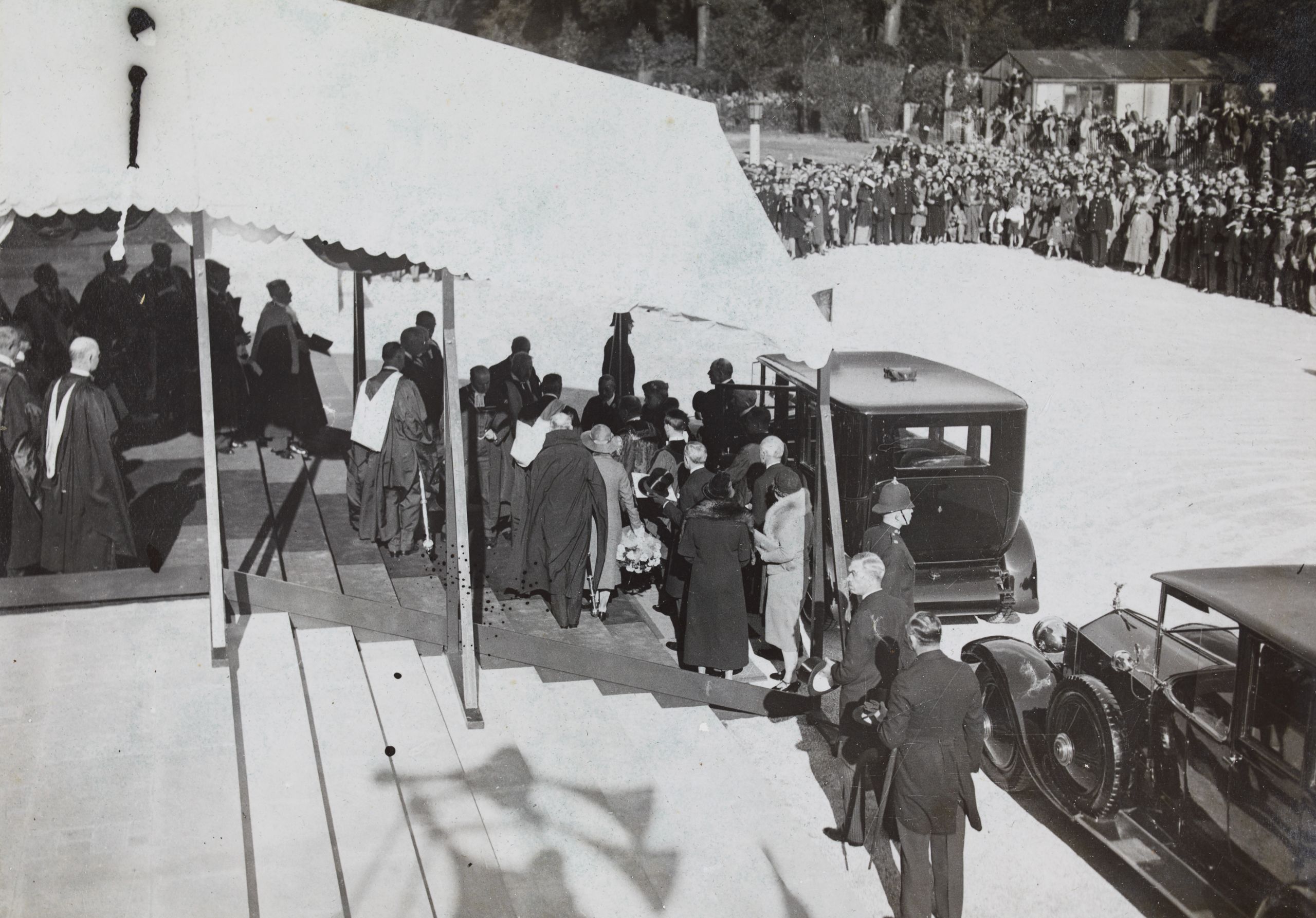
King George V arriving to open Cambridge University Library in 1934.
King George V arriving to open Cambridge University Library in 1934.
Scandalous & libellous books
It has long been a student myth in Cambridge that the Library’s tower is where the more risqué collections are hidden away from prying eyes...
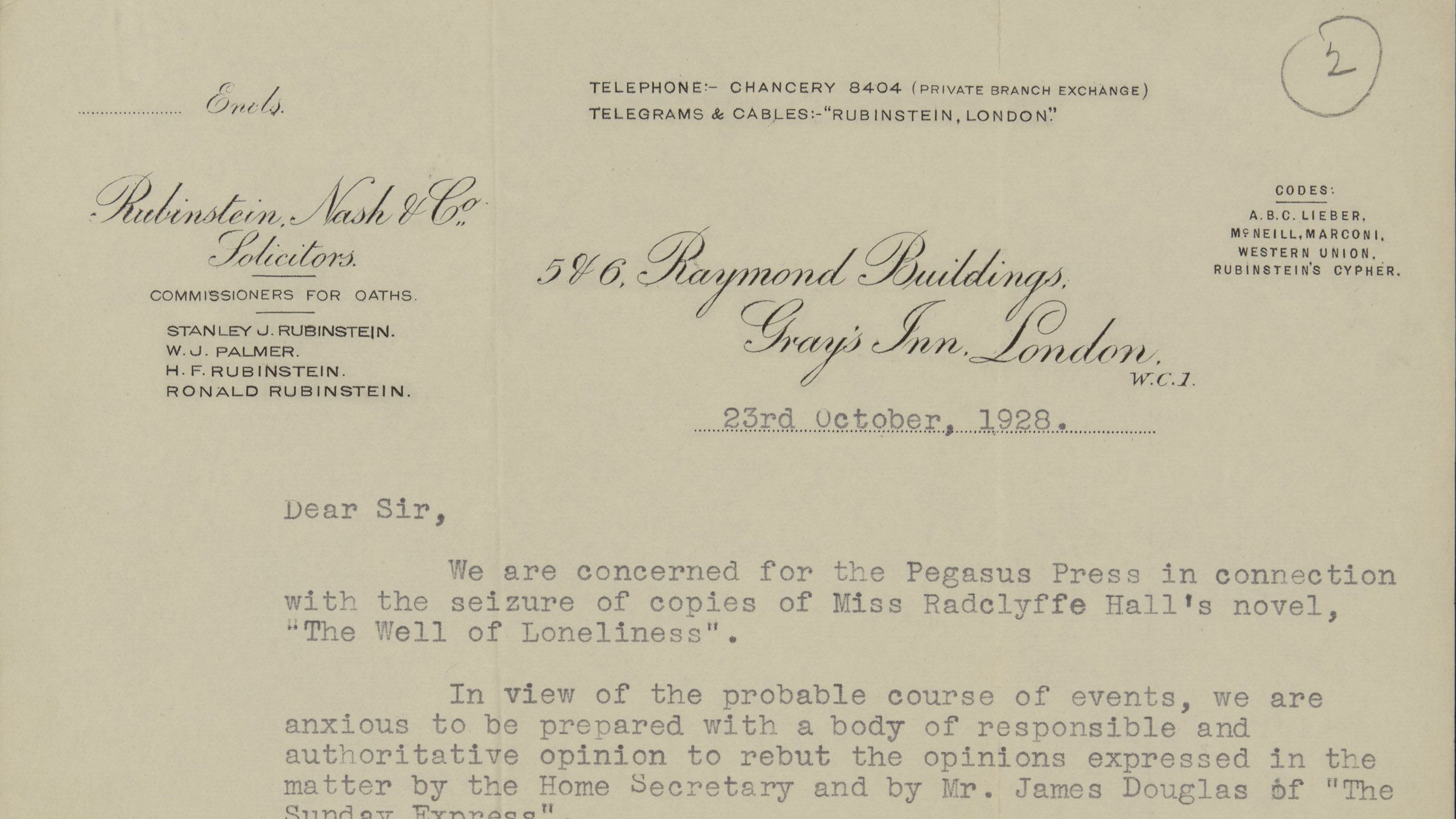
In his first novel, The Liar, Stephen Fry has one of his characters attempt to gain access to the Tower's store of forbidden literature by devious means.
Adrian forges an authorisation note by his tutor in order to see some of the Library’s more obscene publications. The novel both relies on and enhances myths associated with the Tower collection.
Whilst this myth of floors of Victorian pornography must be debunked, works of a sexual nature do come into the Library and for many years were secreted away in a collection which came to be called ‘Arc’ (from the Latin for ‘secret things’).
Its contents include works of sexual science, books with shocking illustrations, and erotic fiction, and the collection gives an interesting snapshot of the subjective approach of past generations of librarians to the books in their care.
Although not stored in the Tower, for many years they were kept in the University Librarian’s office. ‘Arc’ is now used primarily for books suppressed by publishers for legal reasons.
One of the earliest 'scandalous' Arc books going on display for Tall Tales is Aretino’s deeply satirical Ragionamenti. The University Library's copy was published in 1660 and is one of the most celebrated works of Renaissance erotica.
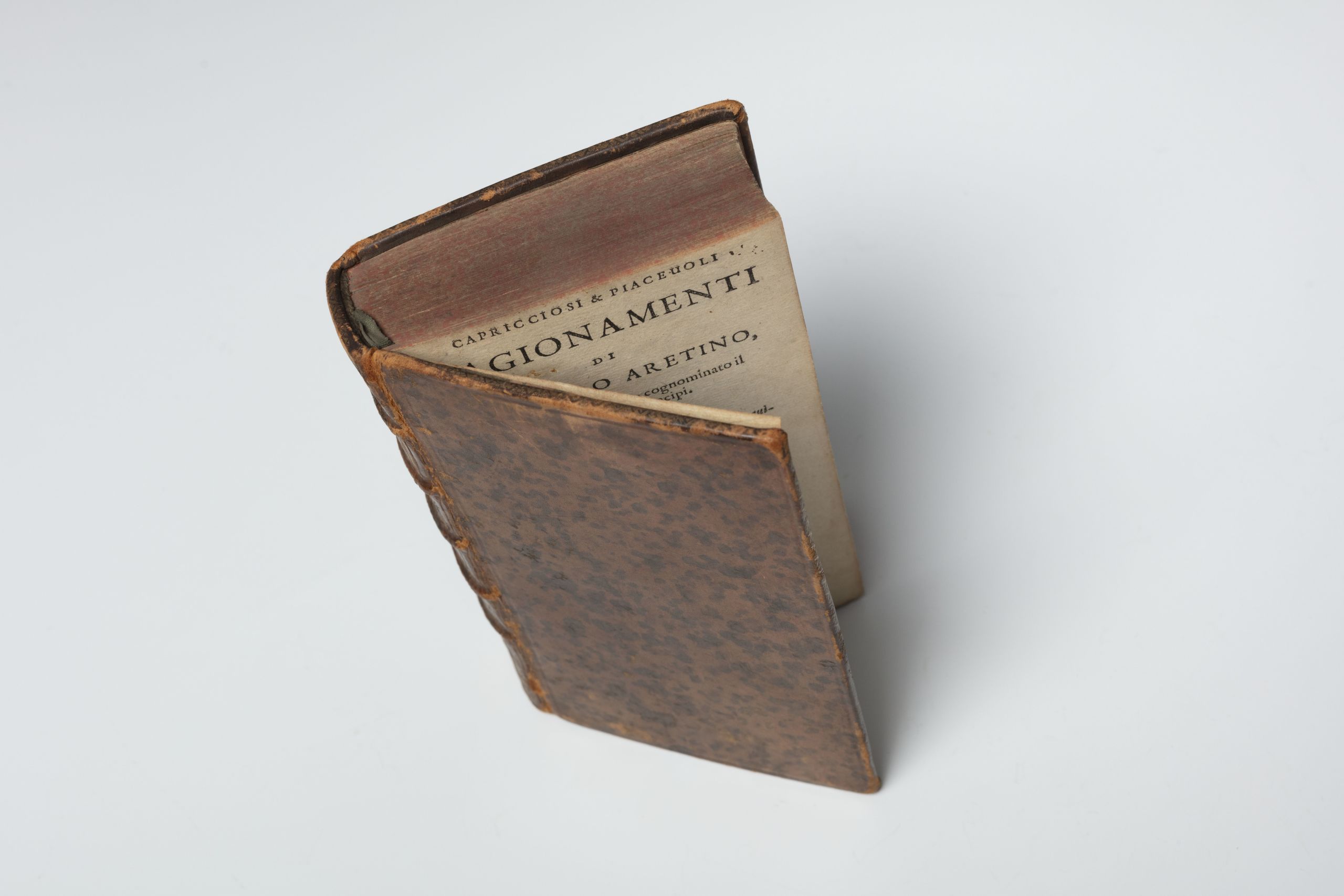
In its dialogues, two women discuss whether one of their daughters should become a nun, a wife or a prostitute. This copy came to the Library in 1936 from the collection of the classical scholar and poet A. E. Housman of Trinity College, and was one of a number of early printed books added to ‘Arc’ in the inter-war years.
One of the reasons for the creation of the 'Arc' class in the early twentieth century was the increase in books published on sexual science, a subject not considered appropriate for readers to browse on the open shelves.
Psychopathia Sexualis first appeared in 1886 and approached human sexuality through a number of case studies, serving as a forensic reference book for psychiatrists, physicians and judges. It was one of the earliest works of this nature to discuss the causes of homosexuality, which Krafft-Ebing saw as psychological in origin.
The private press movement flourished in the early decades of the twentieth century, following the foundation in 1890 of William Morris’s Kelmscott Press, and saw beautifully illustrated limited editions produced on fine paper, often paid for in advance by subscription.
It was probably the erotic illustrations in this edition of the poems of Catullus, below, (many of which are of a sexual nature) which saw it placed in the ‘Arc’ collection, primarily to protect the book from readers who might seek to deface it.
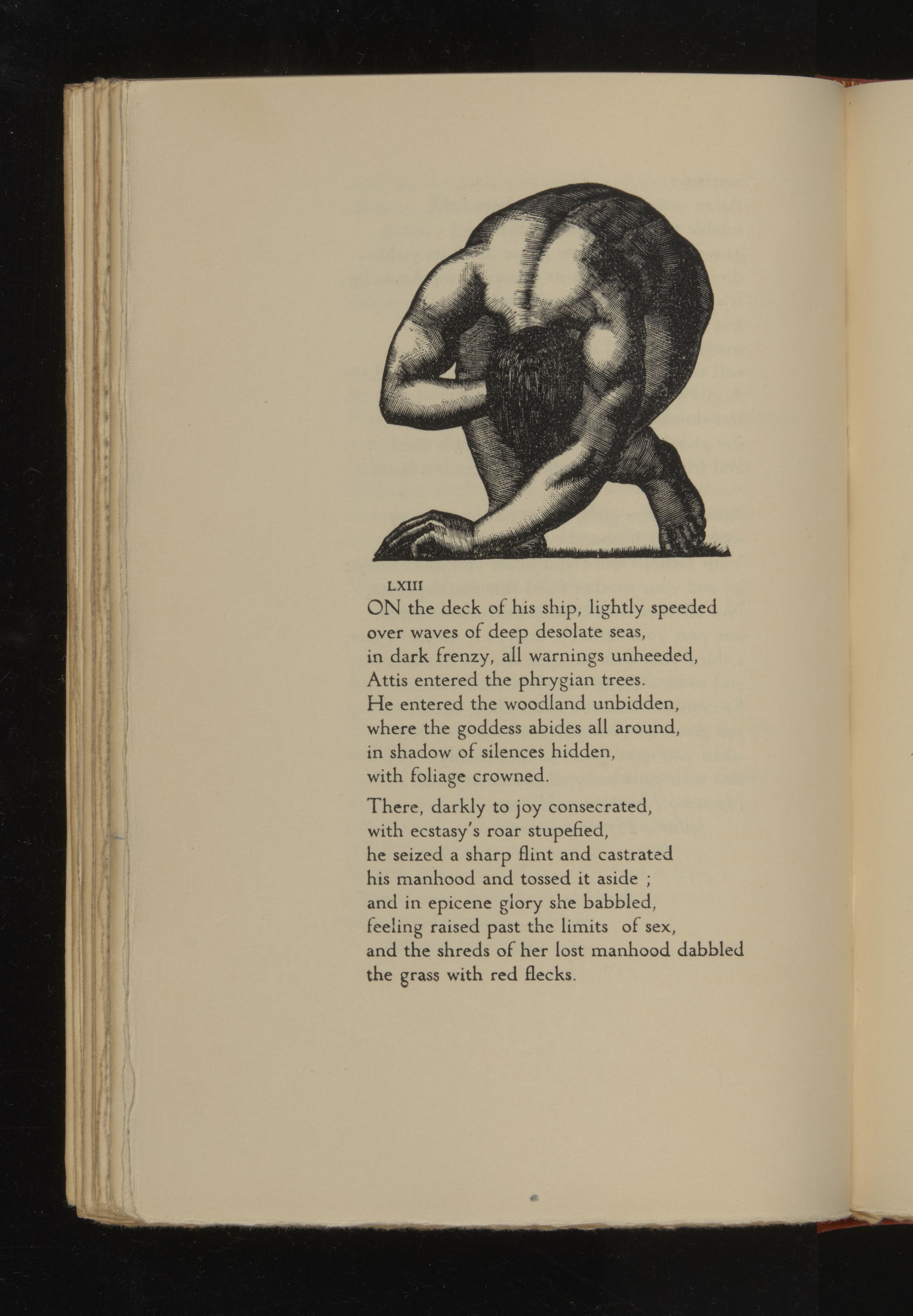
Soon after its publication, Radclyffe Hall’s lesbian novel The Well of Loneliness, which also features in Tall Tales was the subject of an obscenity trial in the UK.
The Sunday Express stirred up a campaign against it, despite the fact that it contained no passages of a sexually explicit nature. A number of individuals, including Virginia Woolf and E. M. Forster, were called to the trial as witnesses by the publisher’s legal team to testify in its favour.
Inside the Library’s copy of the book is a previously unknown letter, below, to a member of the Library staff, Theodore Bartholomew, inviting him to testify. The lawyers suggest that ‘we venture to believe that you will be taking a sympathetic interest in the matter…’.
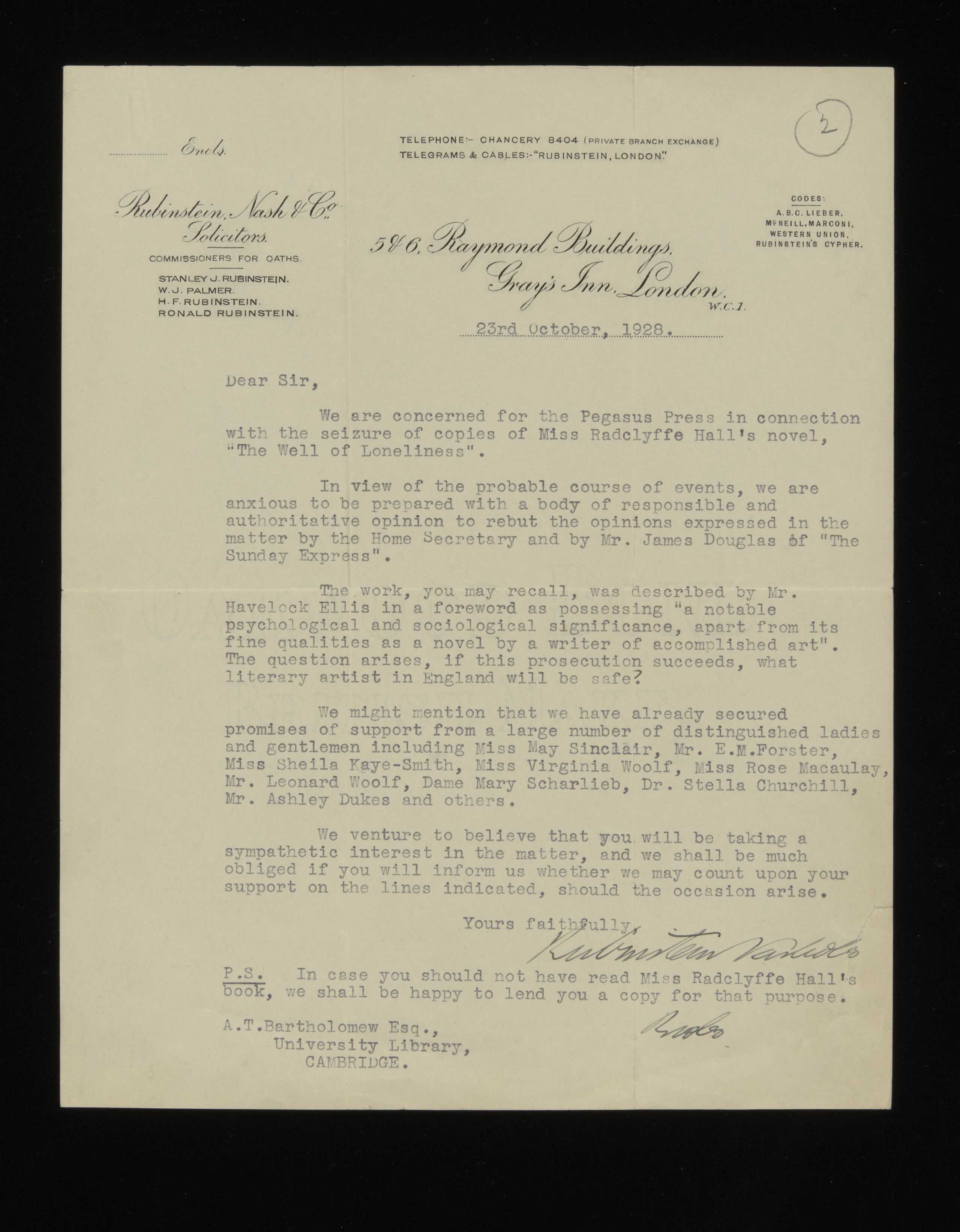
Also going on display is the erotic novel ‘Memoirs of a woman of pleasure’.
The first example of English prose pornography — it was first published in London in 1748, and became one of the most prosecuted books in the history of publishing (it was still subject to suppression in 1960s London).
The University Library's volume marries illustrations from a 1786 Paris edition with a modern German translation of the text, and was presented to the Library in 2017 by Patrick J. Kearney as part of a large collection of erotica. Books which the Library was once embarrassed to have are now actively sought out.
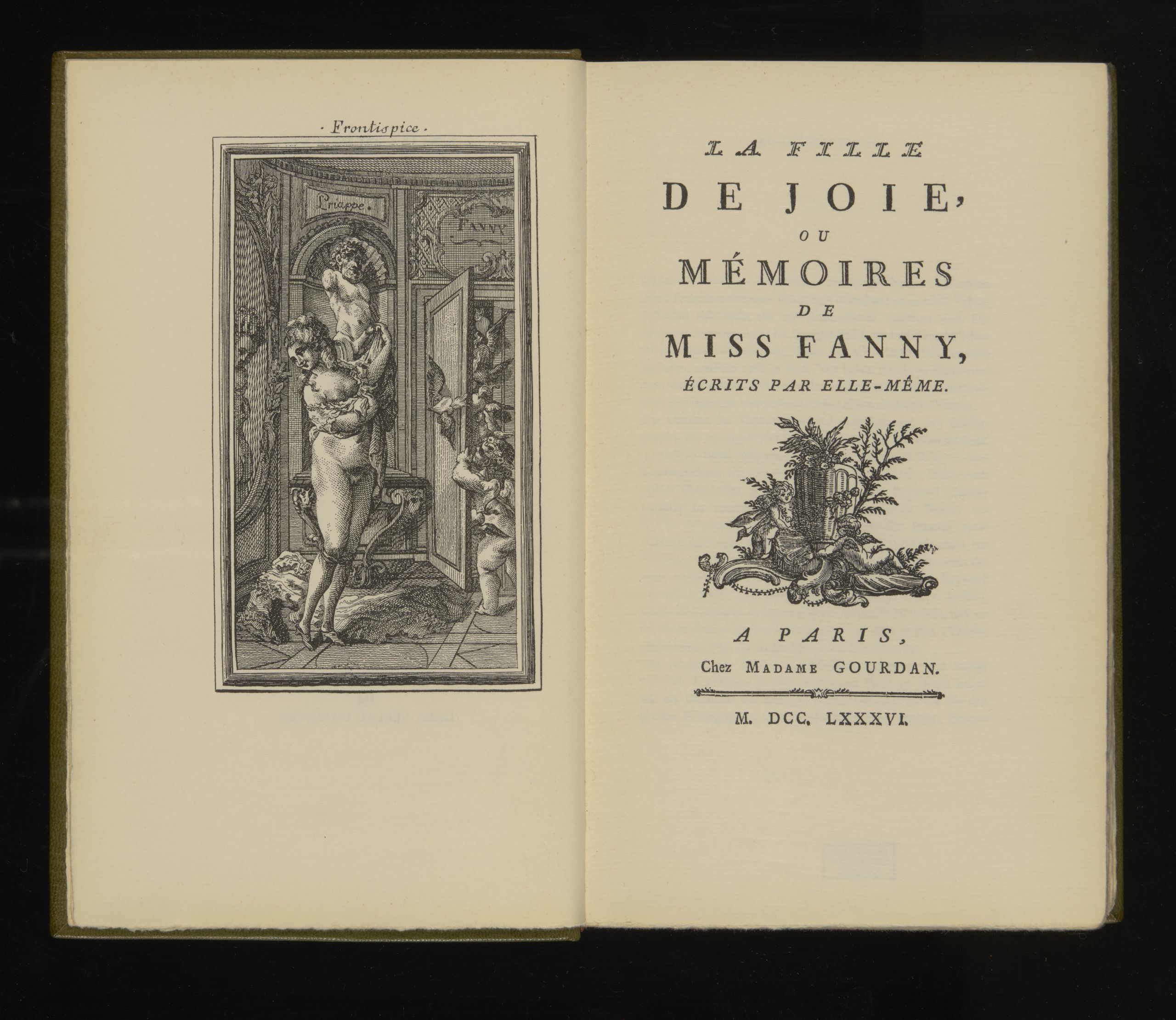
17 storeys and nearly a million banished books - this video whizzes you through the Tower collections, from top to bottom, in just under four minutes. Buckle up.
17 storeys and nearly a million banished books - this video whizzes you through the Tower collections, from top to bottom, in just under four minutes. Buckle up.
Curious collections, fun & games... and some very unusual book titles!
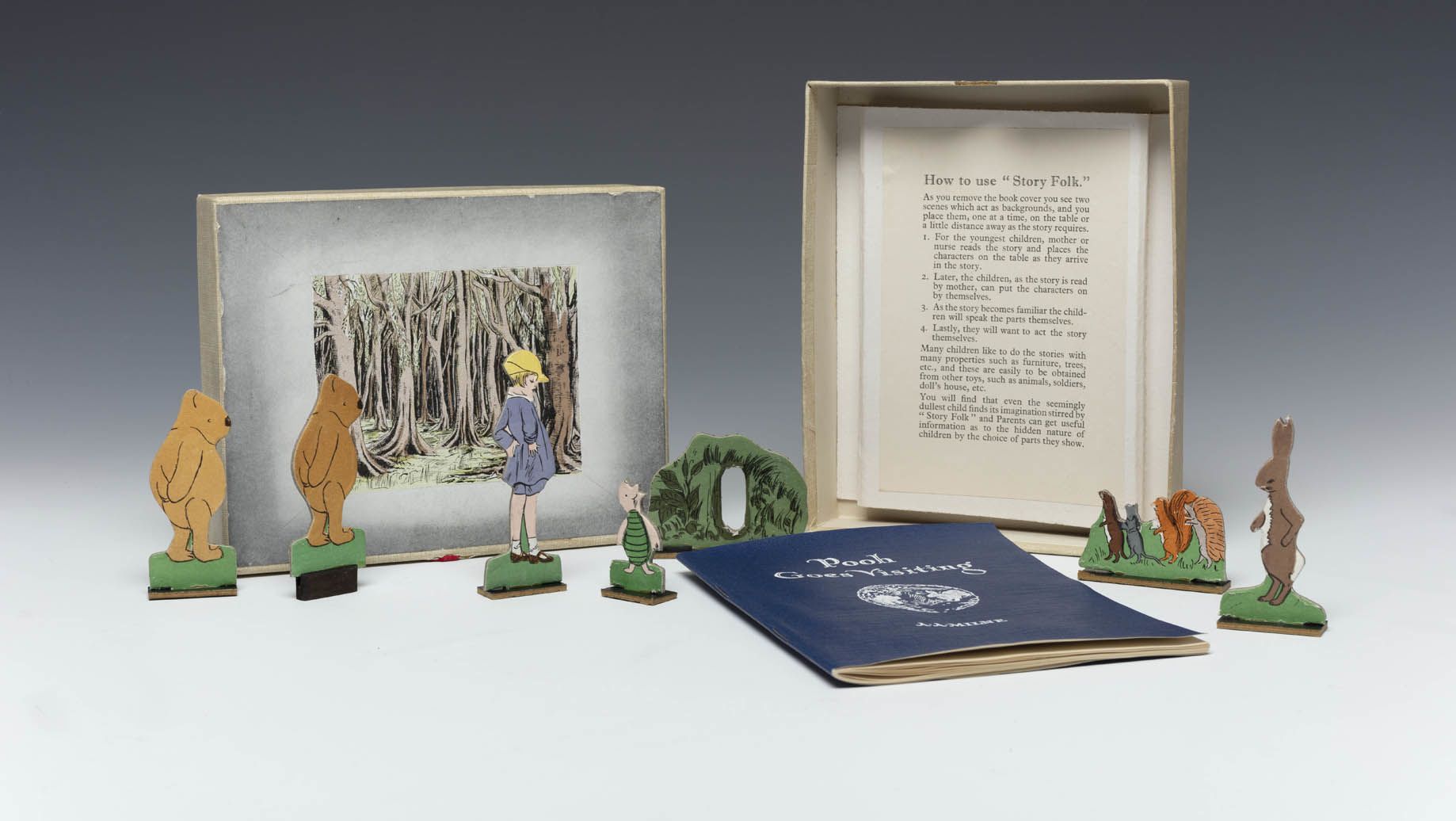
The tower contains many thousands of bizarre books one might think out of place in a university library.
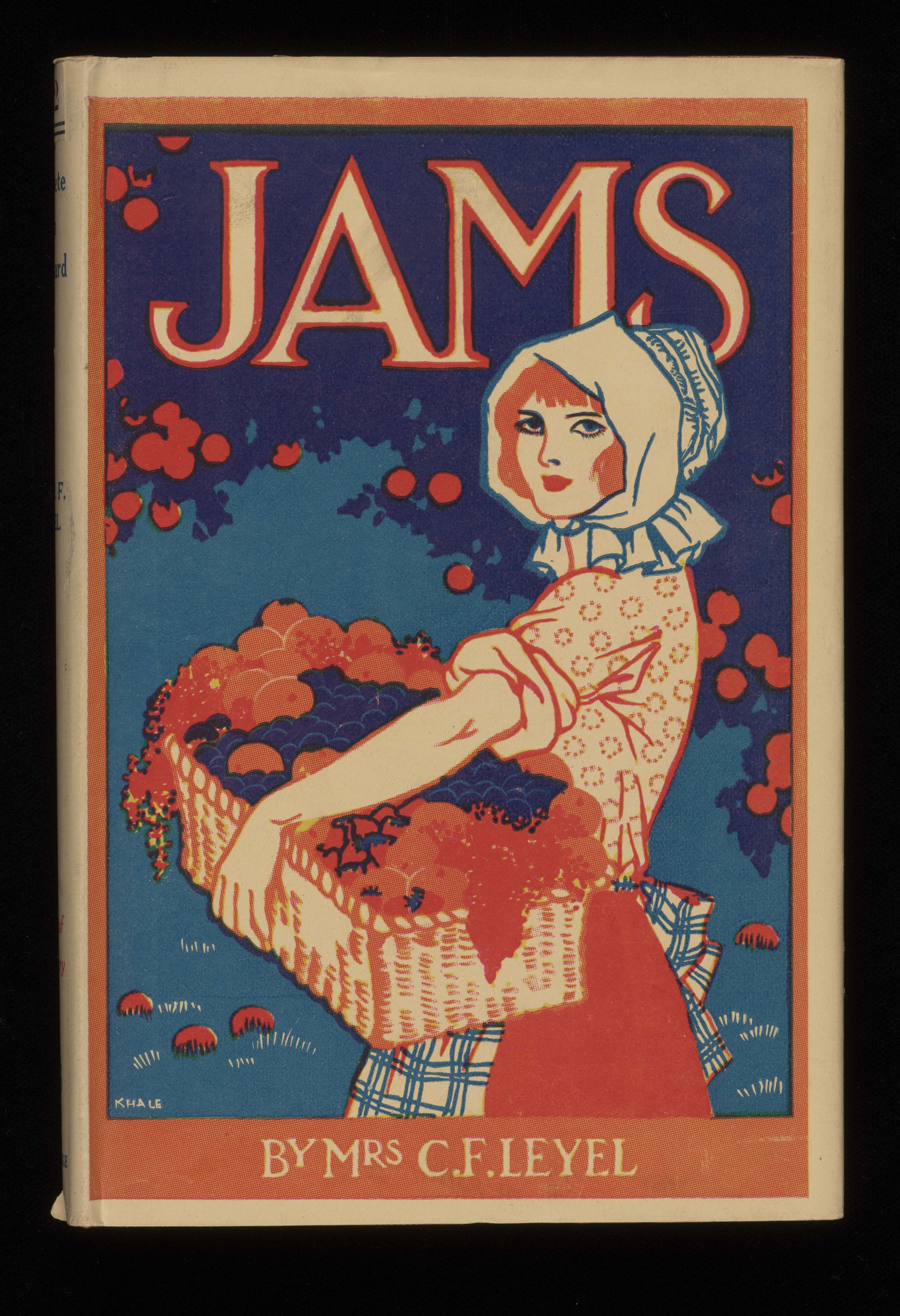
But as a copyright library, it preserves the nation’s printed (and now, increasingly, digital) literary output, whatever the subject might be.
Many items shown in Tall Tales were produced outside London in small print runs, and are unlikely to survive beyond the copyright libraries.
This selection of strange titles cover themes of love and romance, card games, the physiognomy of the human nose and chicken-rearing.
The tower collection can tell us much about social history in the nineteenth and twentieth centuries.
The short practical pamphlet on chicken rearing encourages people to take up the hobby, and its author, a Mrs Woodrow of Harrow, notes that rearing chickens is ‘One of the least expensive, most enjoyable, scientific, interesting, and healthy hobbies that can be undertaken.’
Elsewhere, J. W. Taylor, an expert on phrenology diversified into a similar study of the human nose for a 1912 work that found it's way into the Cambridge University Library Tower.
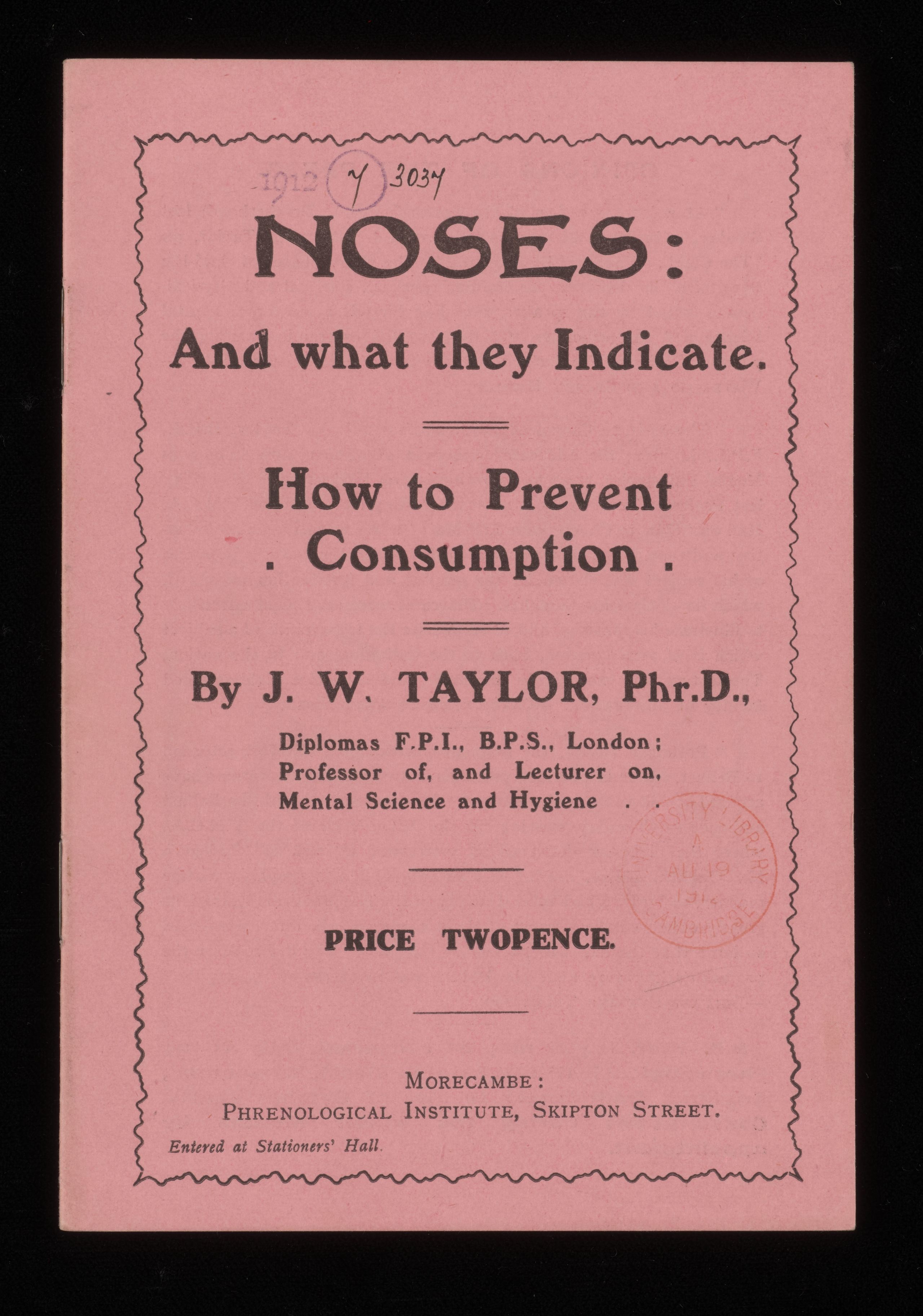
The nose, Taylor claims, is the one facial feature which can’t be hidden and is consequently one of the most important indicators of character. The Roman nose is described as being ‘the nose of a conqueror’: people who have this type of nose often make natural leaders, including Elizabeth I.
The cognitive nose is found ‘among men of all pursuits’ but especially those who ‘gain the highest kind of excellence in every department’.
One of the stranger items to be found in the tower is All Wool: A Good Yarn Well Spun. The volume purports to be ‘not by W. W. Jacobs’, a well-known writer of short stories.
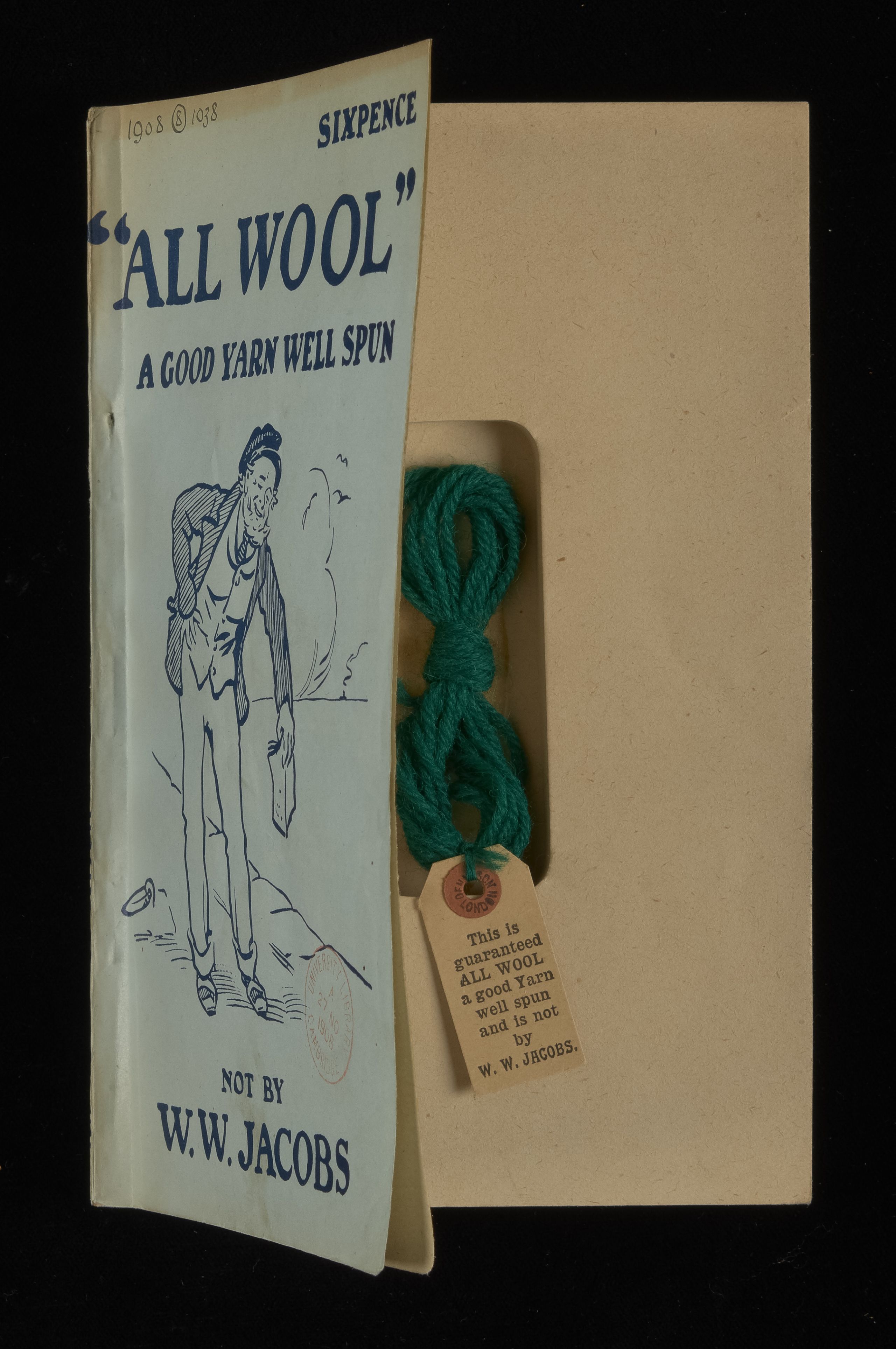
When the book is opened, the reader finds he or she has been duped: inside is merely a skein of wool - for which the reader had to pay the princely sum of sixpence.
Ephemeral literature of this kind is highly valued by researchers, and today the Library actively seeks such publications, particularly those with local connections, as well as illustrated children’s books.
The tower already holds a large cross-section of books and objects for children, giving an idea of the breadth of the collections in this area.
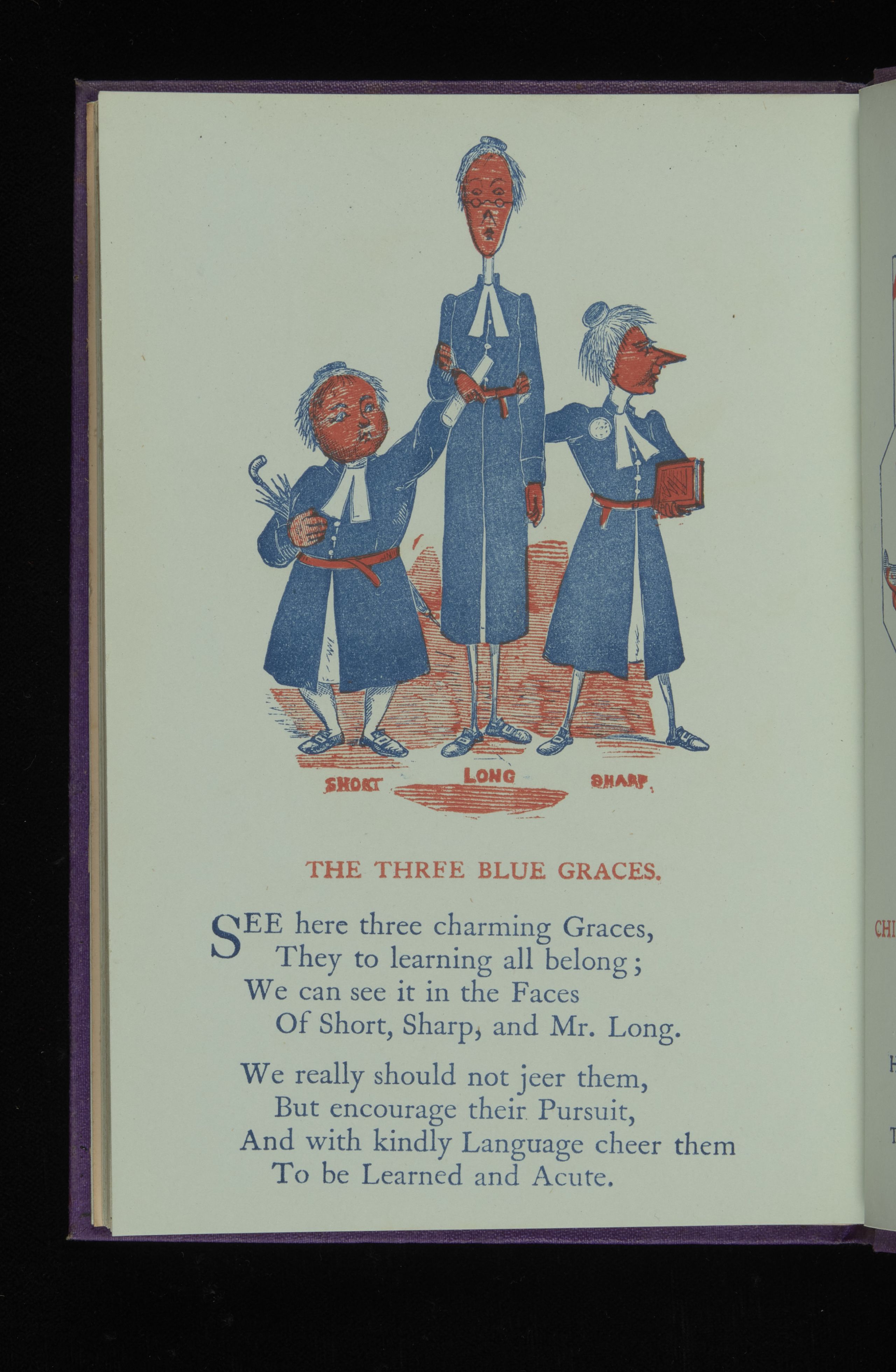
Holdings are not limited to printed books, but include a number of toys and games — many now exceedingly rare — which came to Cambridge under the Copyright Act because they were produced alongside books by the same publishers.
From indestructible cloth books and sets of Mr Men, to interactive (yet instructional) works on grammar and story books with moving parts, the Library’s wealth of material in this area tells the whole story of children’s publishing from the Victorian period to the present day.
One particularly eccentric object is Ye Comical Rhymes of Ancient Times, first published in 1862, pictured right. The volume features odd poems as well as displaying elements of the casual racism which abounded at the time. You can listen to one of the poems below.




Regional voices
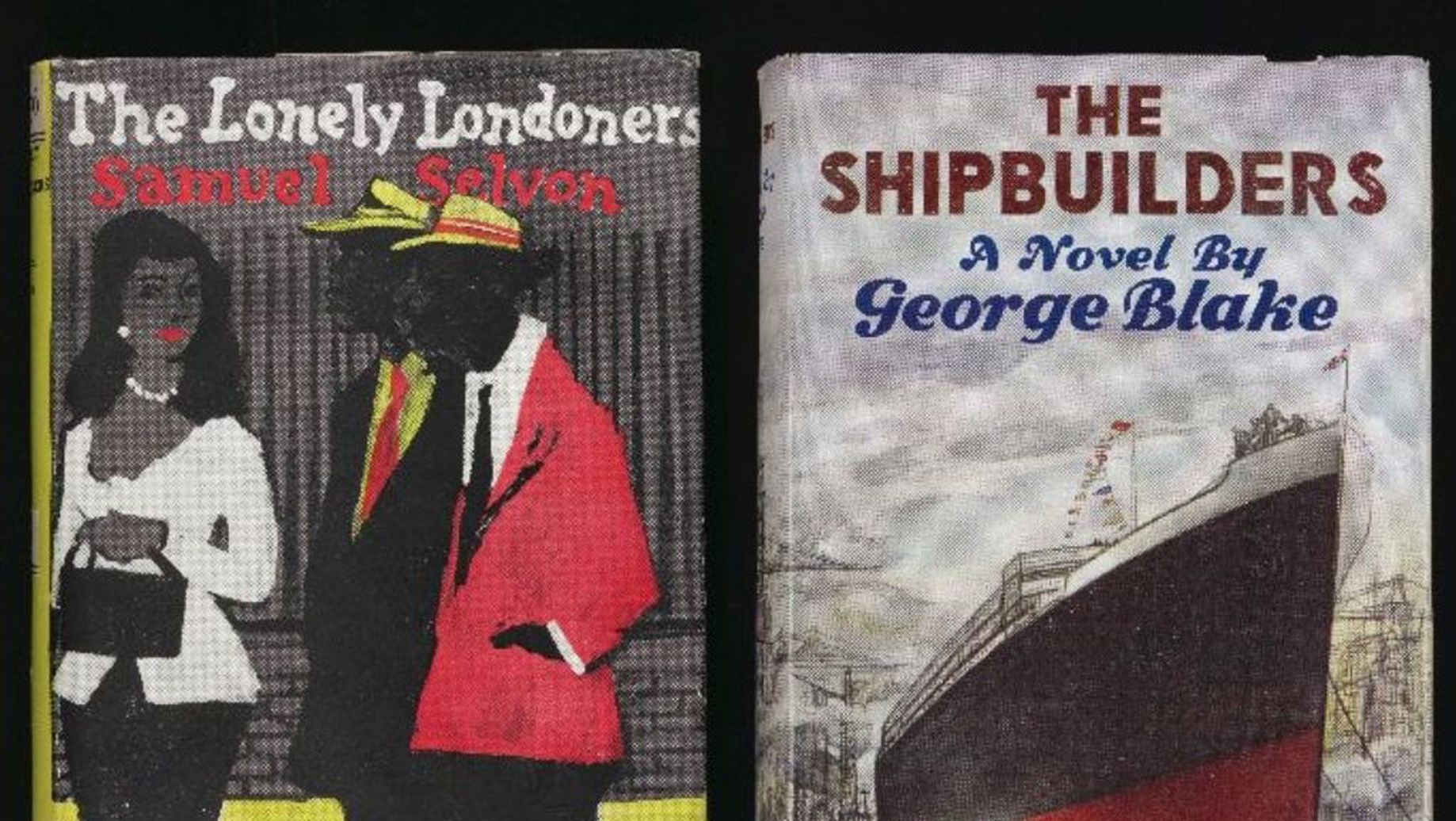
The Tower’s twentieth-century fiction collection can tell us much about regional attitudes and the UK's particularly rich tradition of regional writing.
The Library’s mammoth collection of this material gives researchers access to an almost unparalleled collection. It is an additional bonus to have so many in their original dust jackets, giving an insight into publishers’ opinions of their books and the artistry used to sell these to the public.
Dr Alastair Reid, the Cambridge historian responsible for curating this section of the exhibition, says the best examples of regional writing do not focus solely upon or seek to elicit sympathy for the working-class backgrounds that many such writers grew up experiencing.
"The very best regional books and voices in the tower don’t hold a grudge or have a sense of exclusion; they are empowered and self-defining. Different parts of the country are different, and people who write very effectively about that should be taken more seriously, rather than being held up as a spokesperson for some downtrodden group. One of the things I like best and the thing that these books have in common is that they don’t harp on about how deprived they are."
One of the most interesting books to be featured in Tall Tales is the groundbreaking Lonely Londoners by Sam Selvon, who came to London from his native Trinidad in the 1950s.
Although regarded as a founding father of today's black, British novelists, Selvon remains little-known by the wider literary establishment and British public, an anomaly which is long overdue rectification according to Reid.
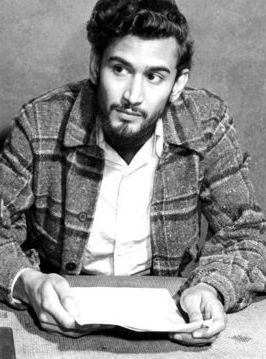
Sam Selvon
Sam Selvon
The Lonely Londoners was one of the first books to focus on poor, working-class blacks following the enactment of the British Nationality Act 1948 and the arrival of the Windrush Generation.
The book was a major step towards the recognition of the new, multicultural London of the 1950s.
When Sam Selvon was trying to write a novel about the experience of young West Indian migrants in London in the 1950s he kept coming unstuck in his attempts to accurately capture the tone and tenor of life in London's black neighbourhoods.
Then he had the breakthrough idea of writing in something more like the vocabulary and speech rhythms of his native Trinidad. His use of creolised English, or 'nation language' for narrative, as well as dialogue, paved the way for many writers of colour who followed in his footsteps.
The novel explores the loneliness of young workers trying to make their way against the hostile realities of what had seemed to be a city of opportunity. Although their lives are bleak, the idea of becoming a writer emerges as a way out.
Other novels under the Regional Voices theme include Nell Dunn's Poor Cow and The Dear Green Place by Archie Hind.
Deeply influenced by Continental philosophy and James Joyce, Hind's novel is a neglected modernist masterpiece, the sophistication of which evokes the region’s intellectual democracy.
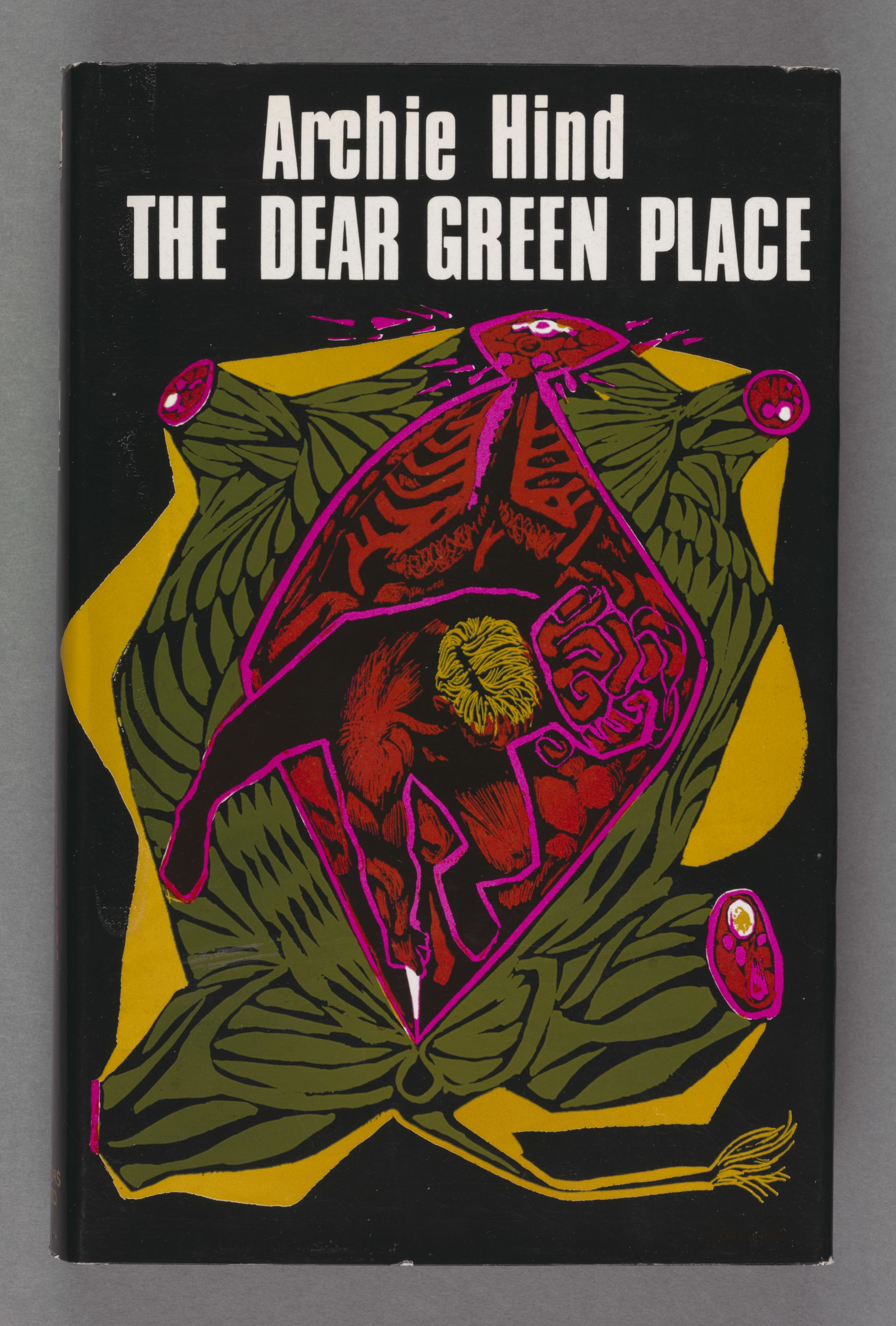
Set in Glasgow, The Dear Green Place is an autobiographical novel written by a young working-class man from a poor background.
It subverts all the expectations that would usually go along with this; a central section describes Hind’s time working in a slaughterhouse, but this was a place and a job he really enjoyed, so there is no sense of it having been oppressive or disturbing in the way the cover suggests.
Meanwhile, Dunn's Poor Cow illuminates her pioneering role in giving voice to London's young working women.
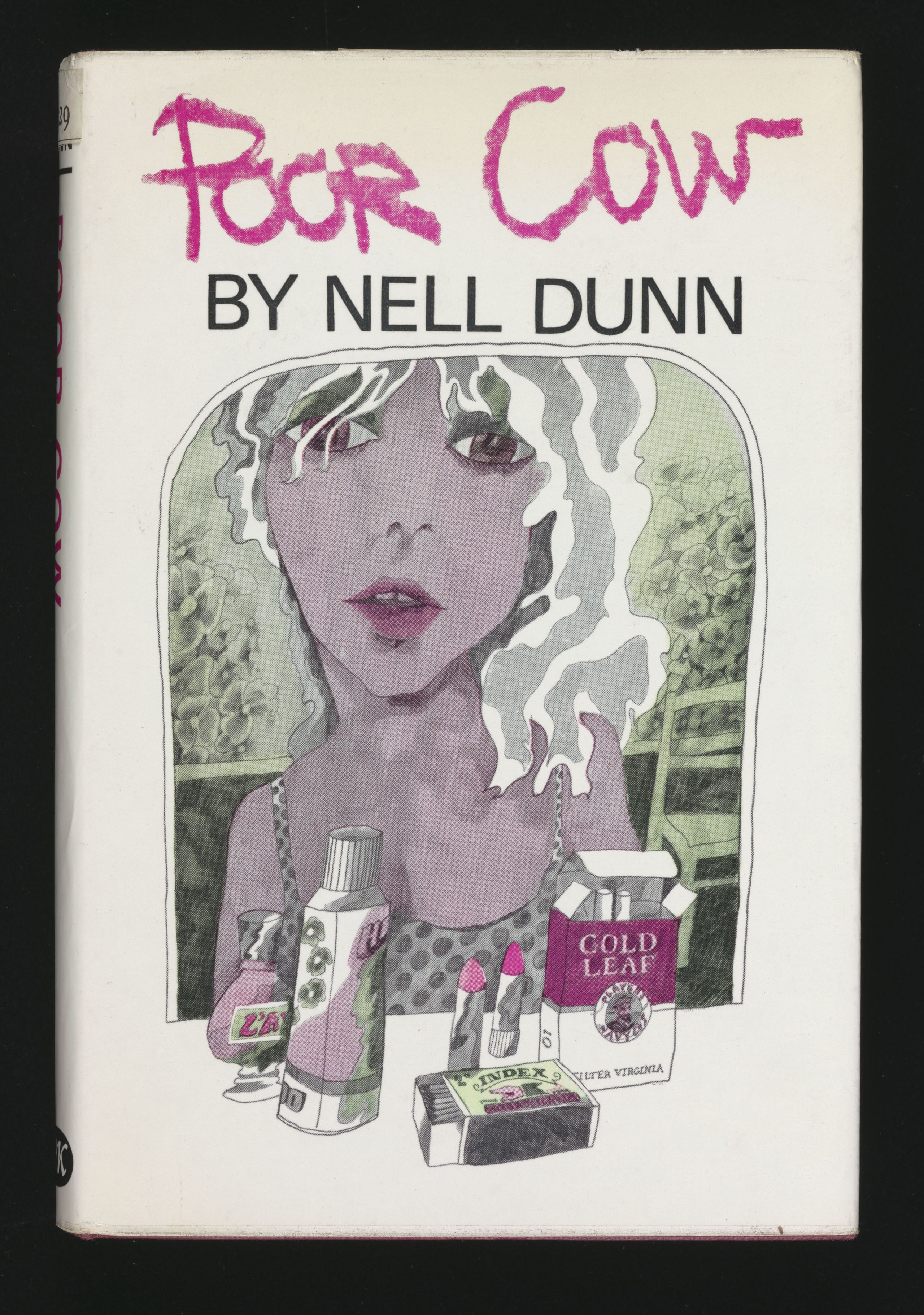
Although she came from an upper-class background, Nell Dunn spent time working in a factory herself, and also lived with and talked intensely to her workmates. Dunn had already produced a book of interviews, Talking to Women, before writing Poor Cow.
The novel takes the form of the interior monologue of a very ordinary, but highly independent young woman, with many echoes of the female voices in James Joyce’s Ulysses.
"Part of what I’m now hoping to do is write a book about regional, social history and mentalities, using the astonishing tower collections and other archives to bring these often unknown and underappreciated writers nearer the mainstream where they absolutely deserve to be."
"Victorian cookery books and Penguin paperback novels were considered of little importance when they arrived – but time and a changing world has made what was once ‘secondary’, one of the greatest book collections of the Western World.
“These collections inform ongoing research at the University Library today including the study of how regional and working-class novels are informing our understanding of a history of place.
"The Tower Collection is not just some static collection of unread books, but a vast amalgamation of ideas that continues to spark inquiry into the human condition.”
Jess Gardner, Cambridge University Librarian, 2018.
Tall Tales: Secrets of the Tower runs until October 28, 2018. Entry is free.
Admission times: Mon-Fri, 9am-6pm. Saturday 9am-4.30pm.
#ulTallTales www.lib.cam.ac.uk
Photos, film and drone footage: Sir Cam, Francesca Harper, Jonny Settle, Stuart Roberts
